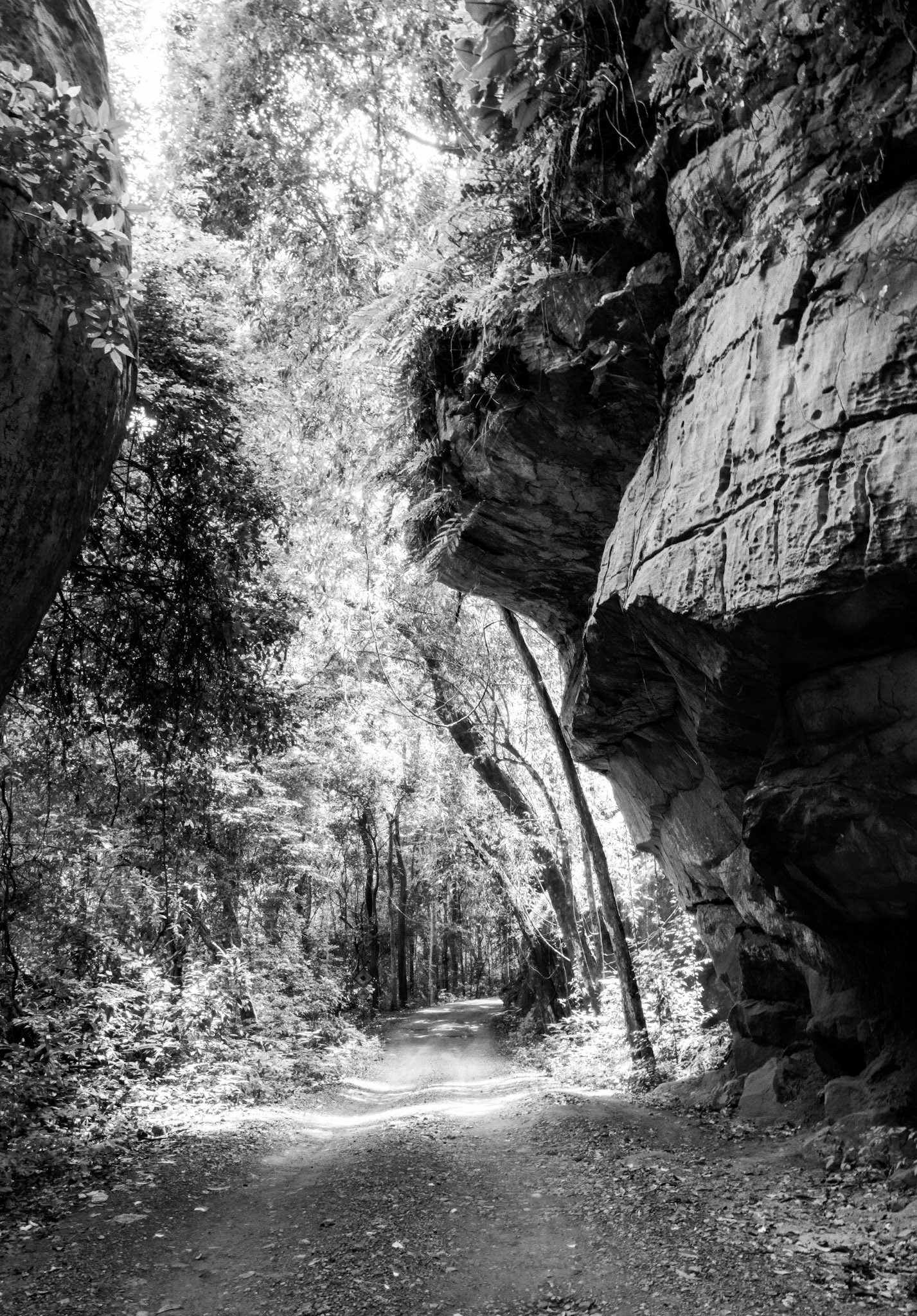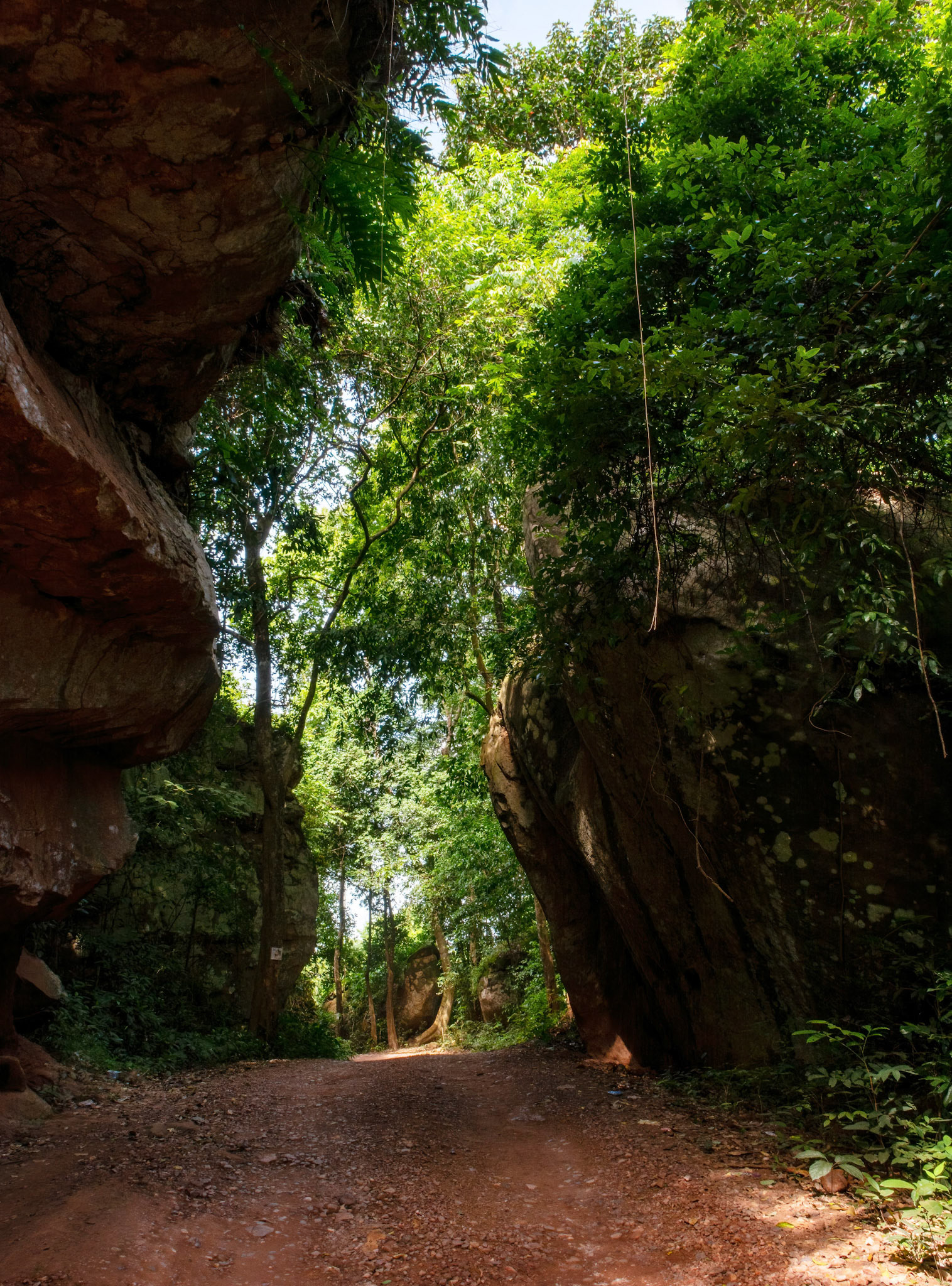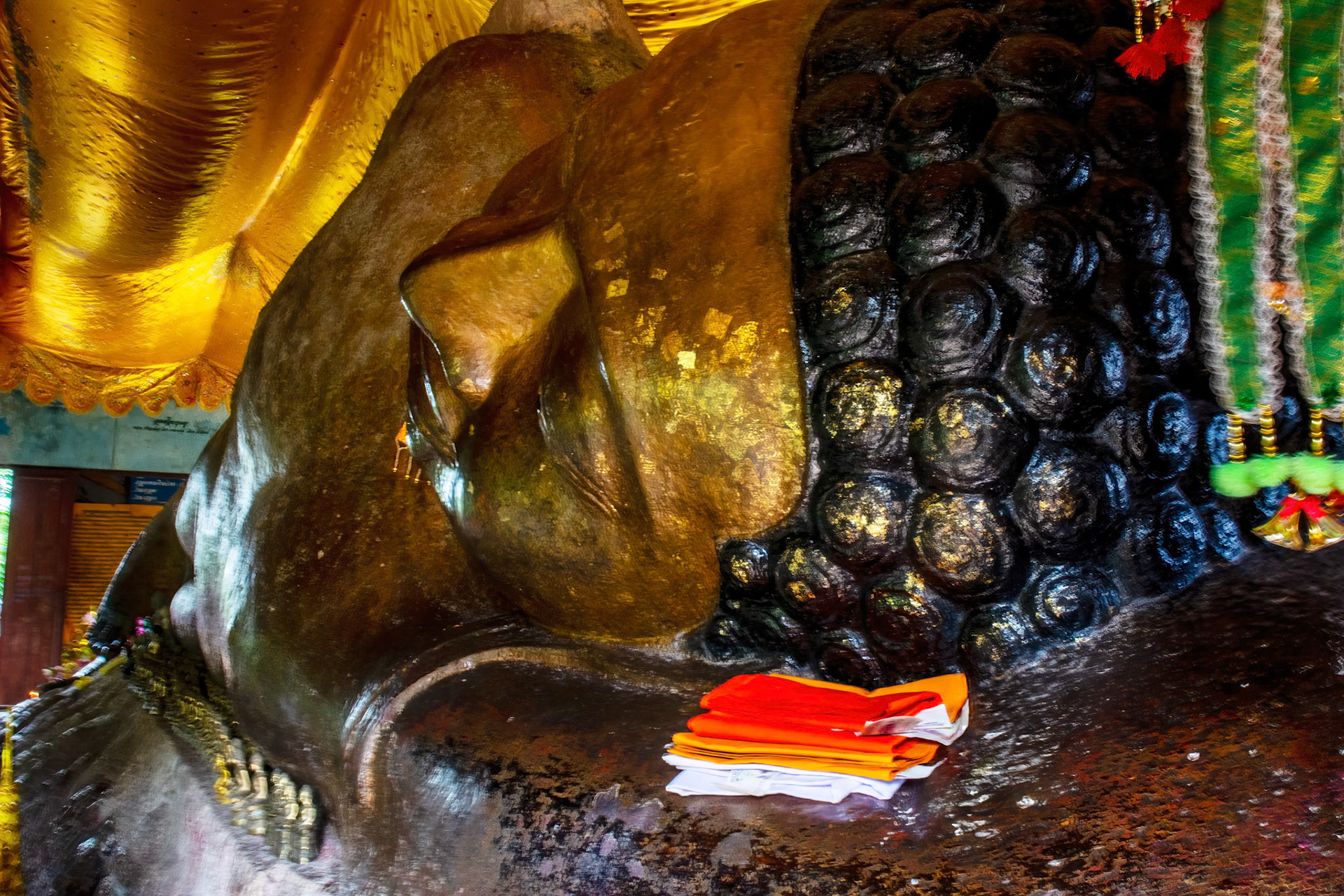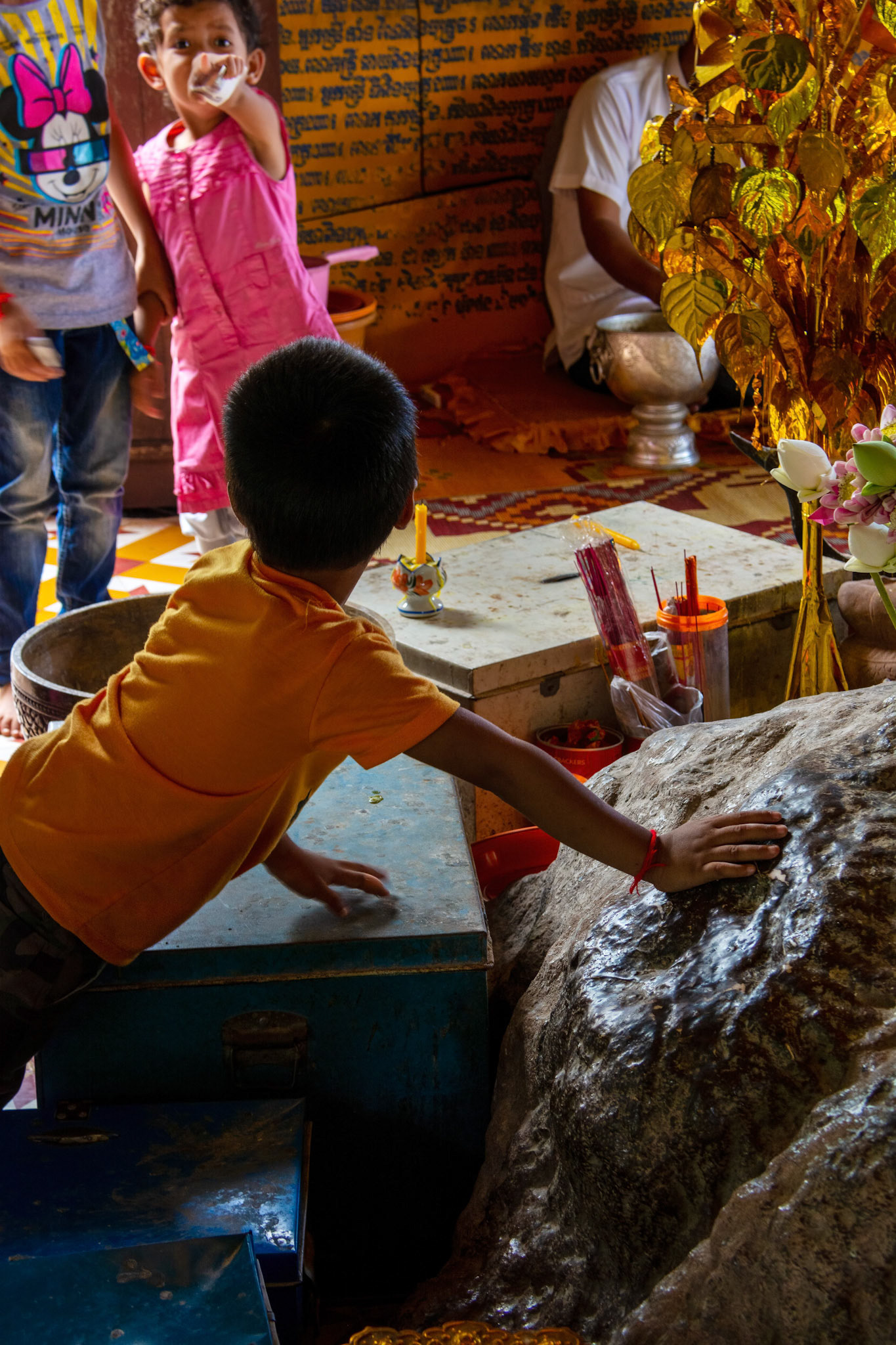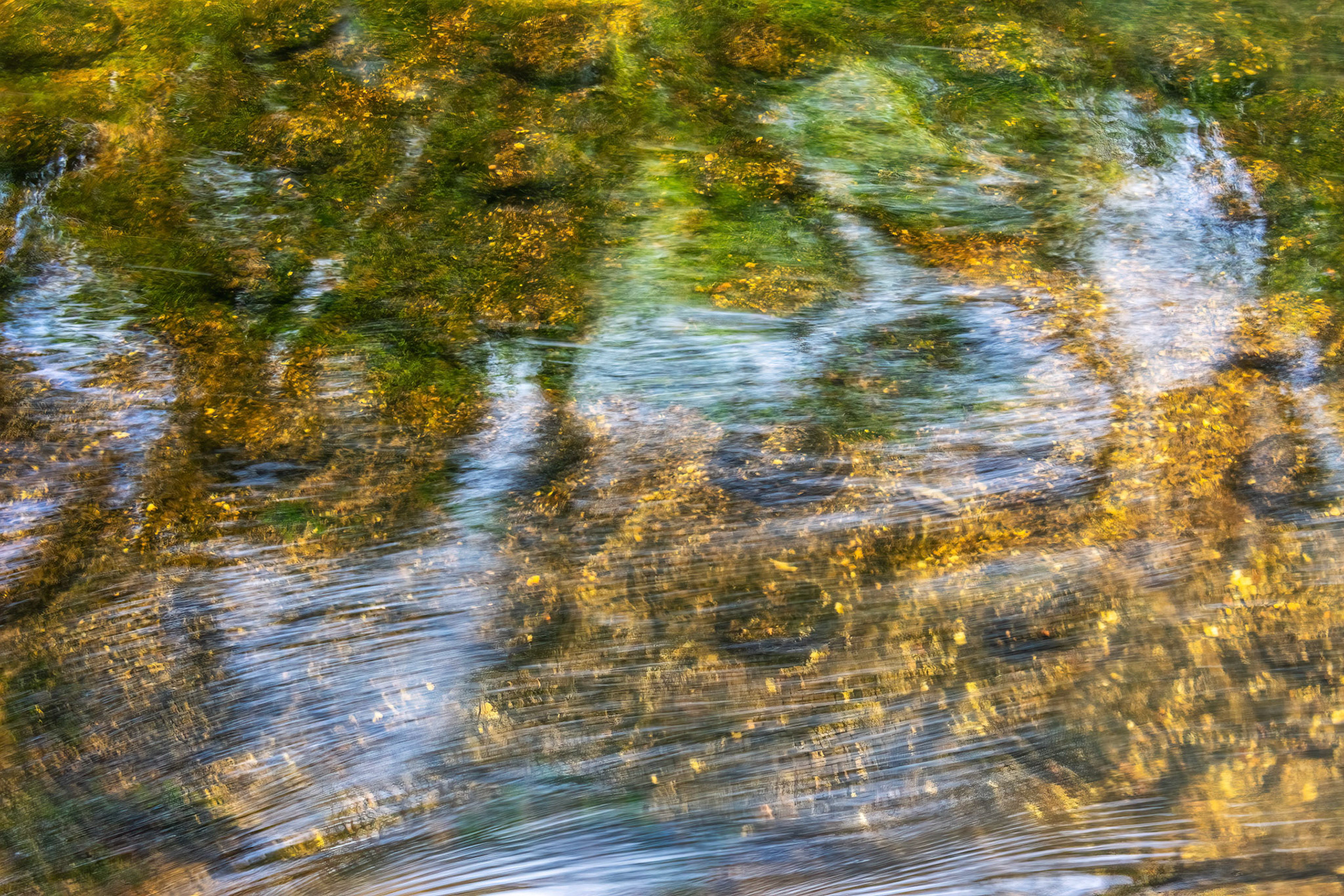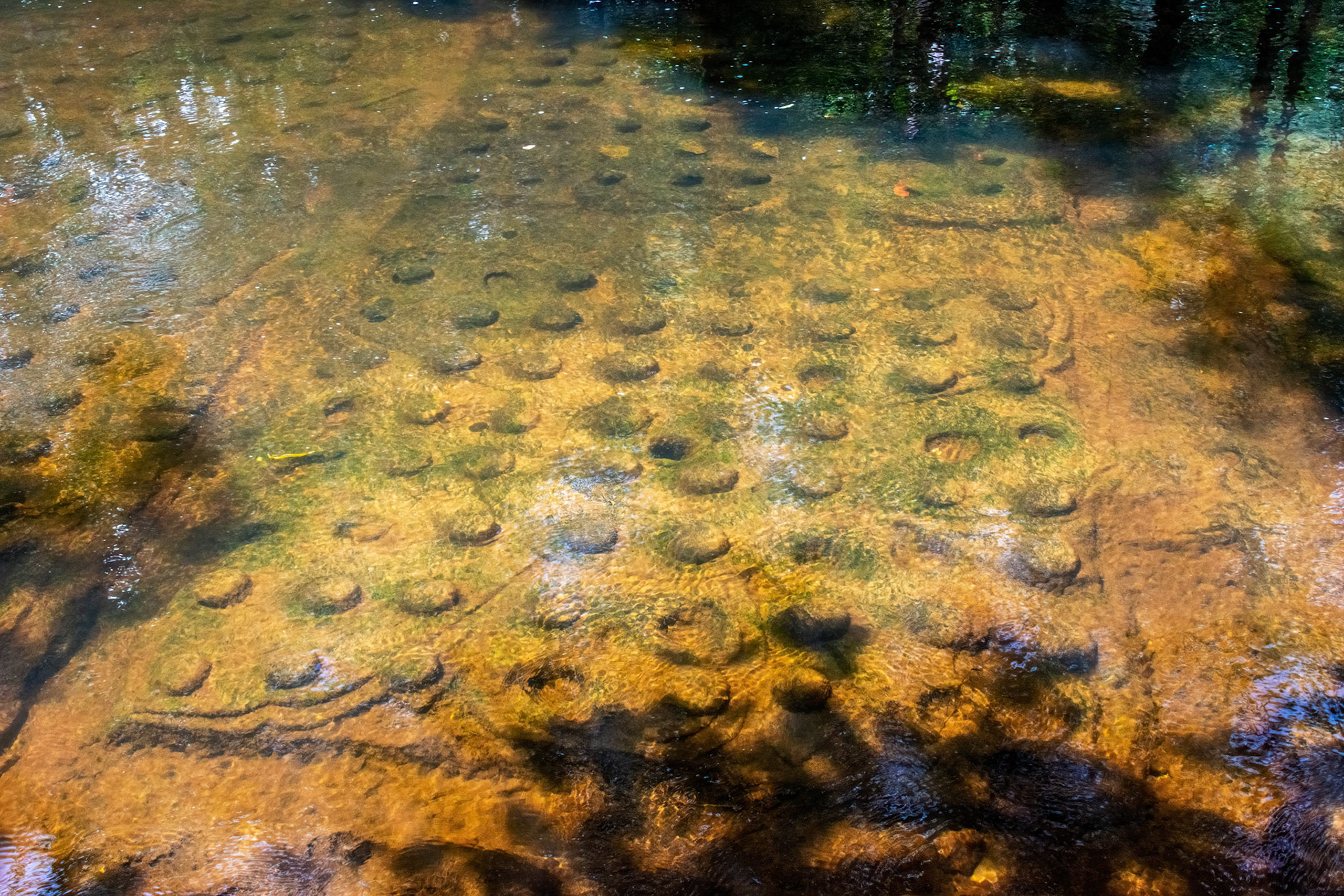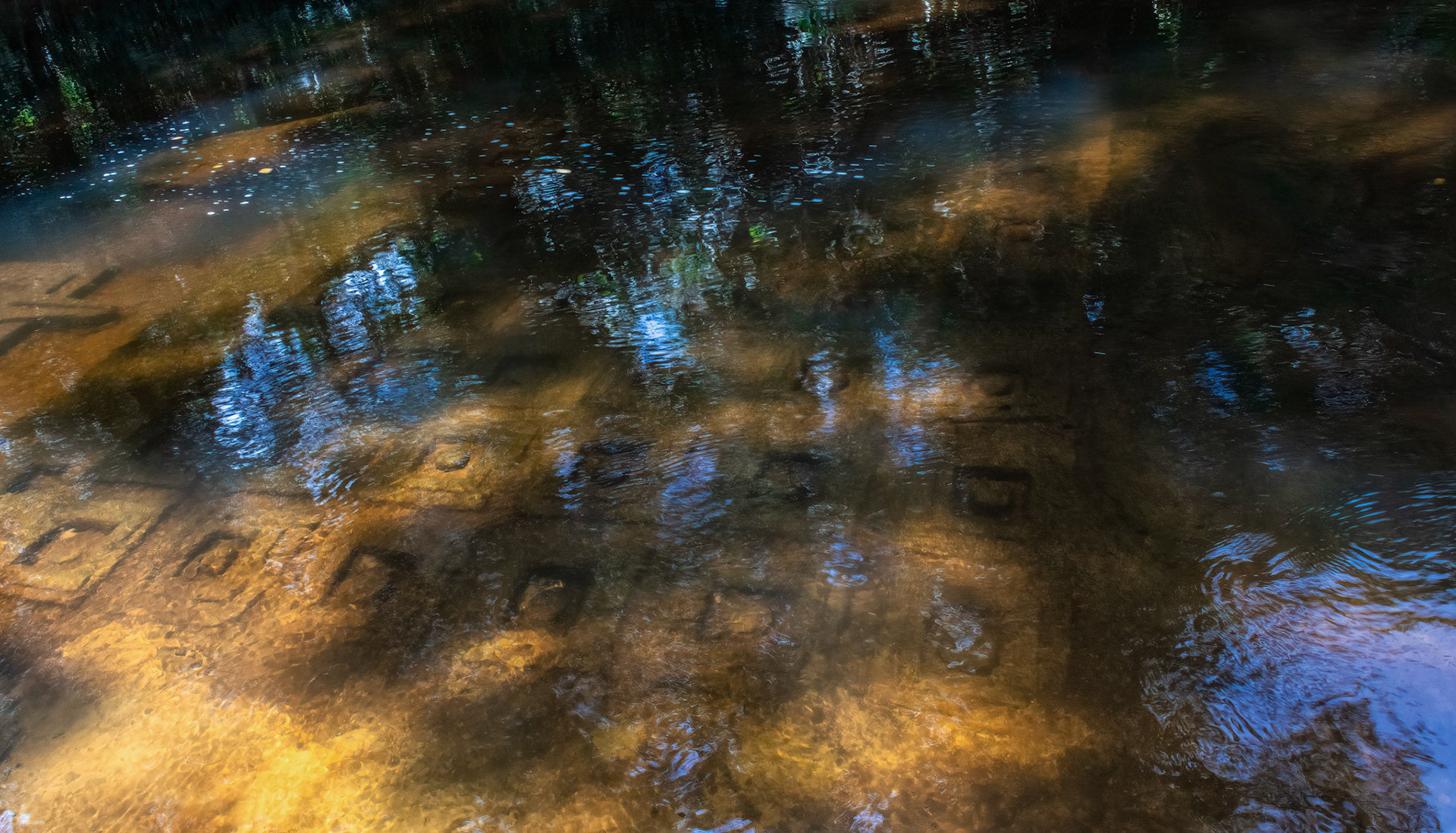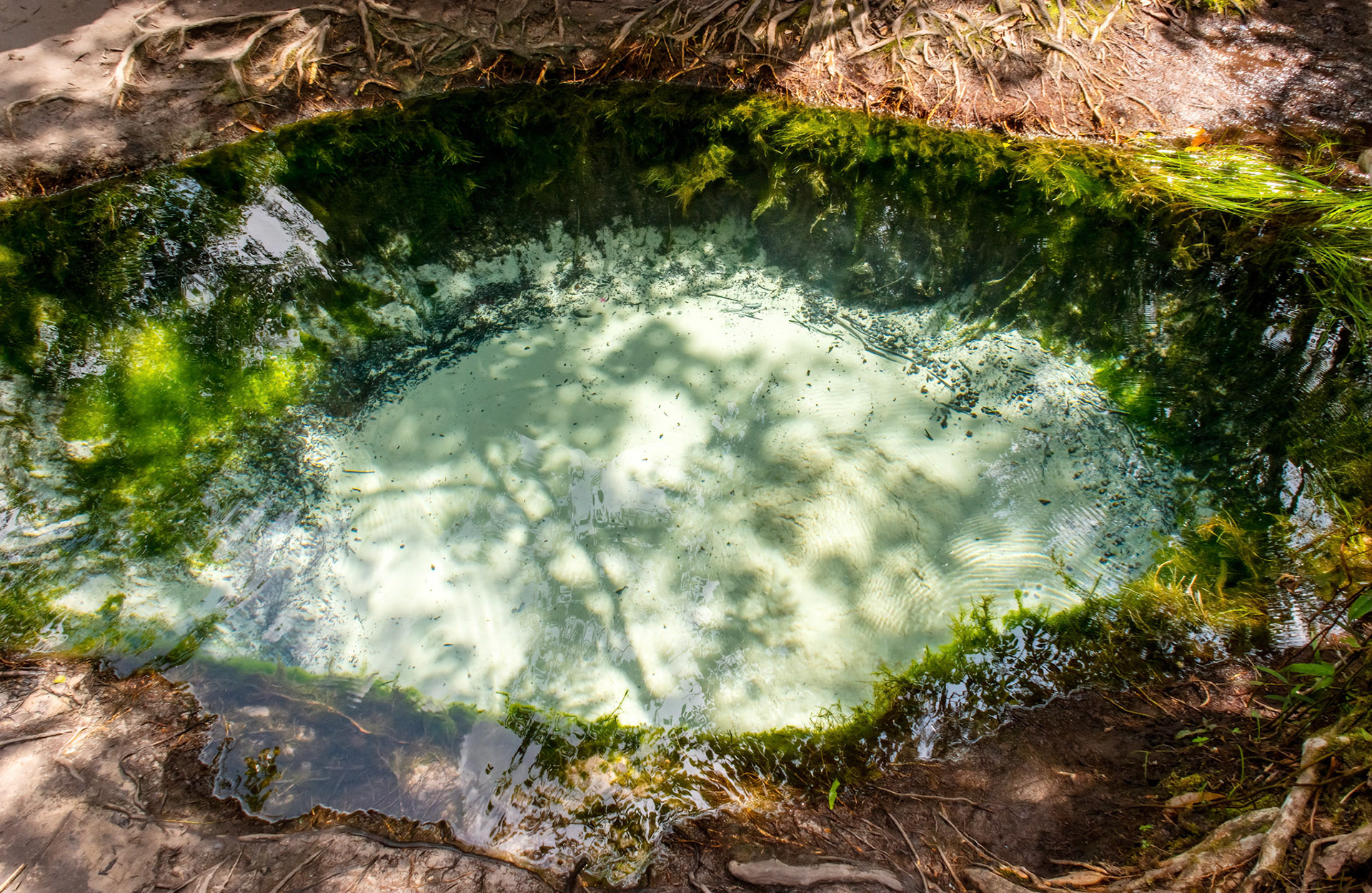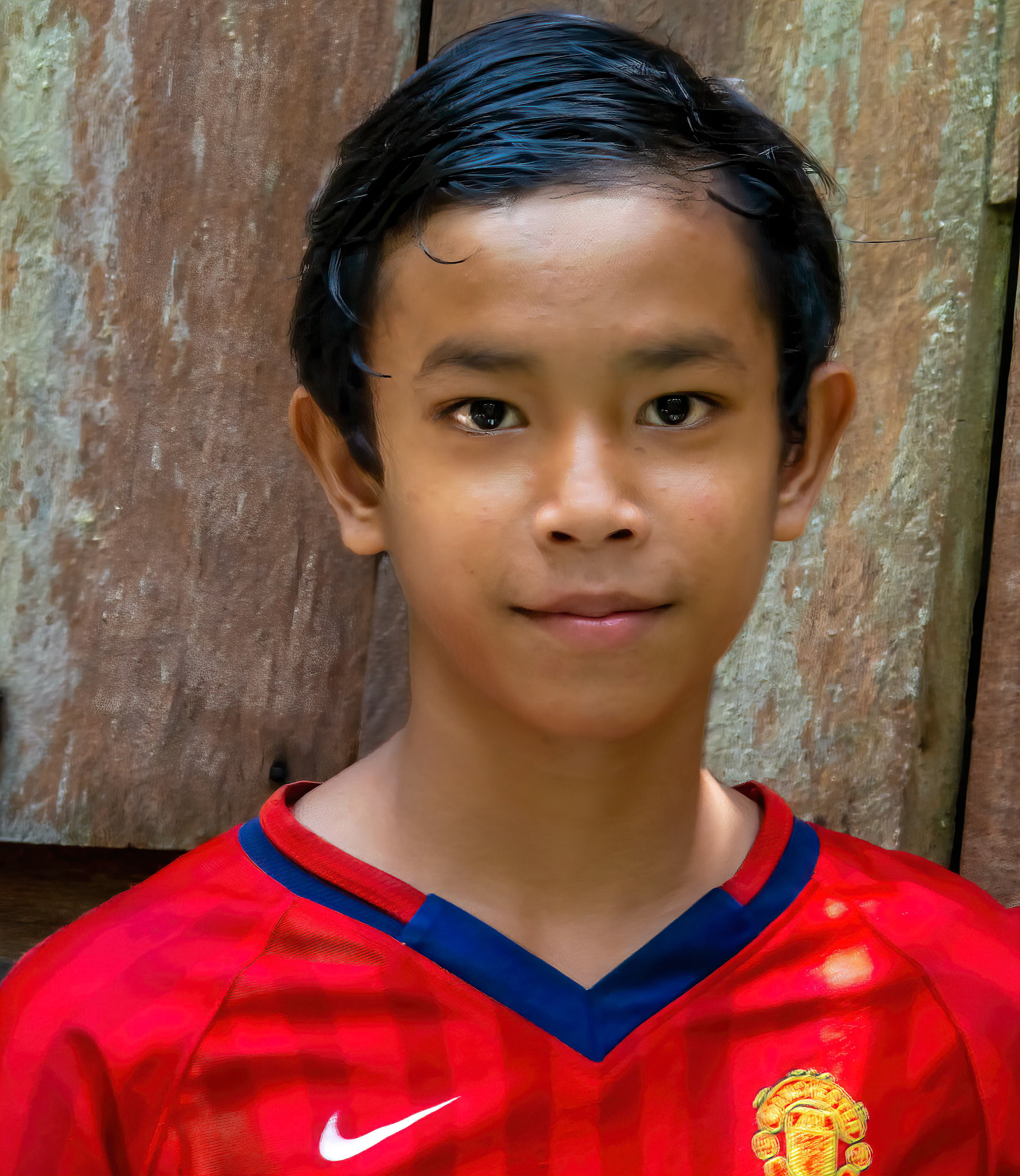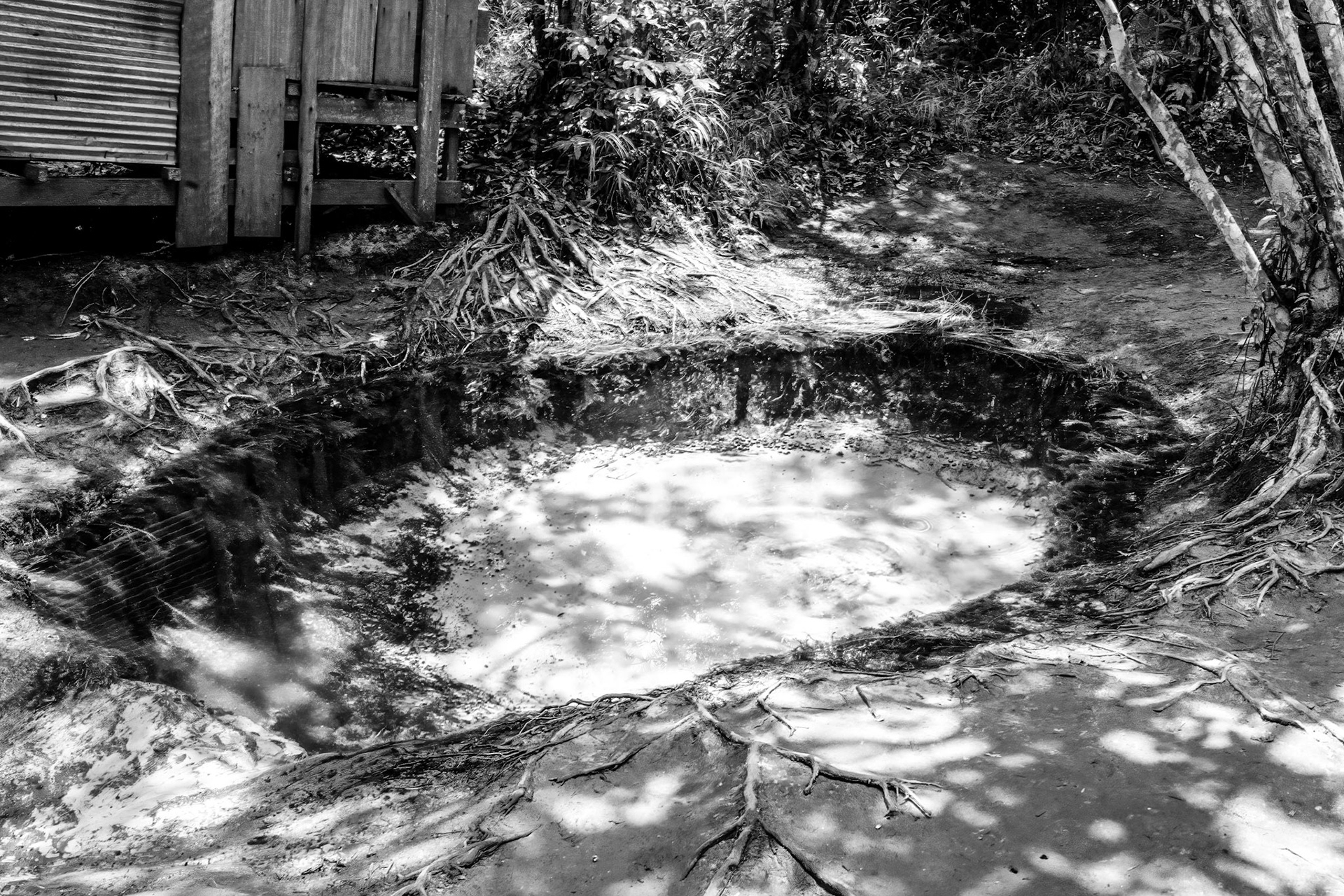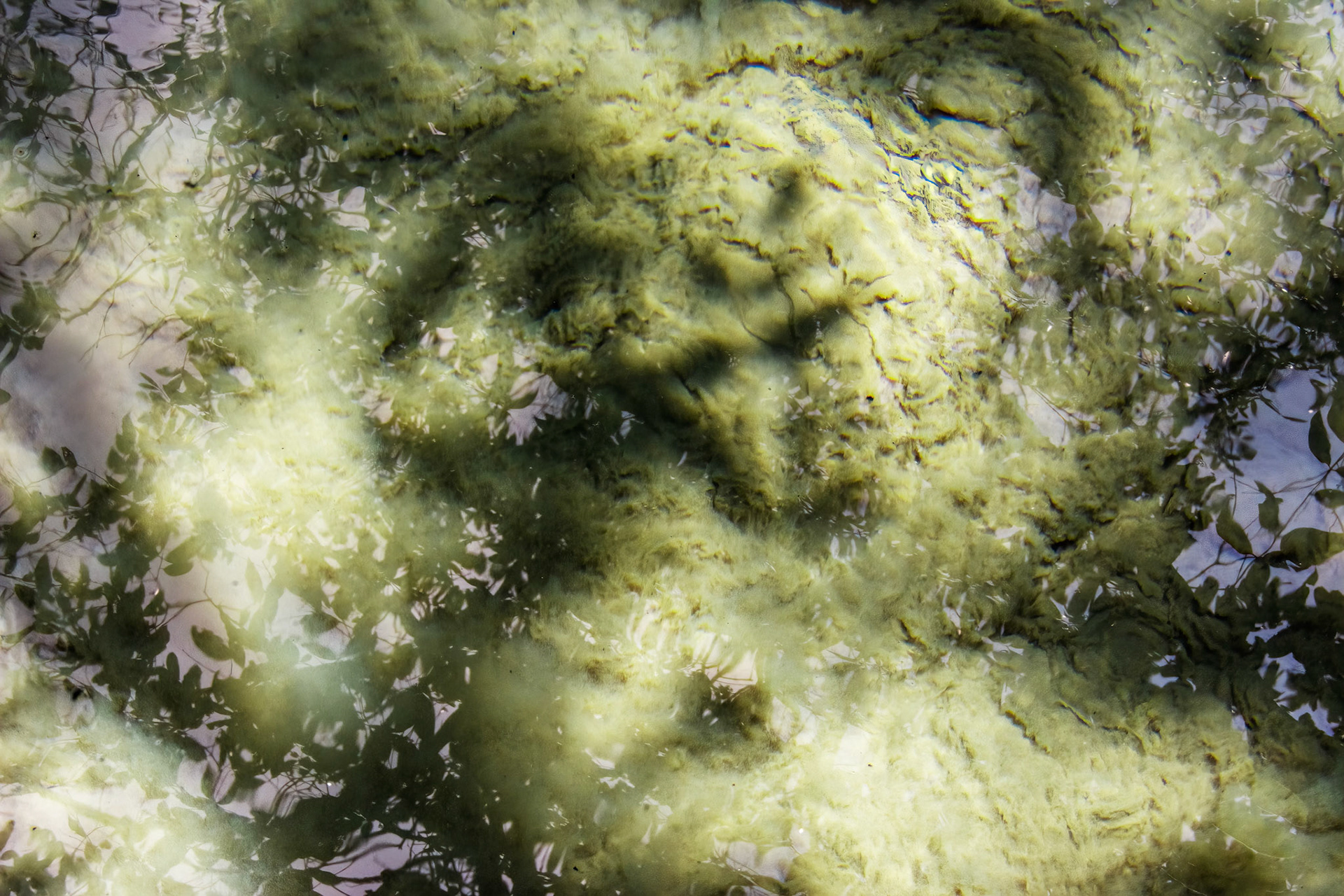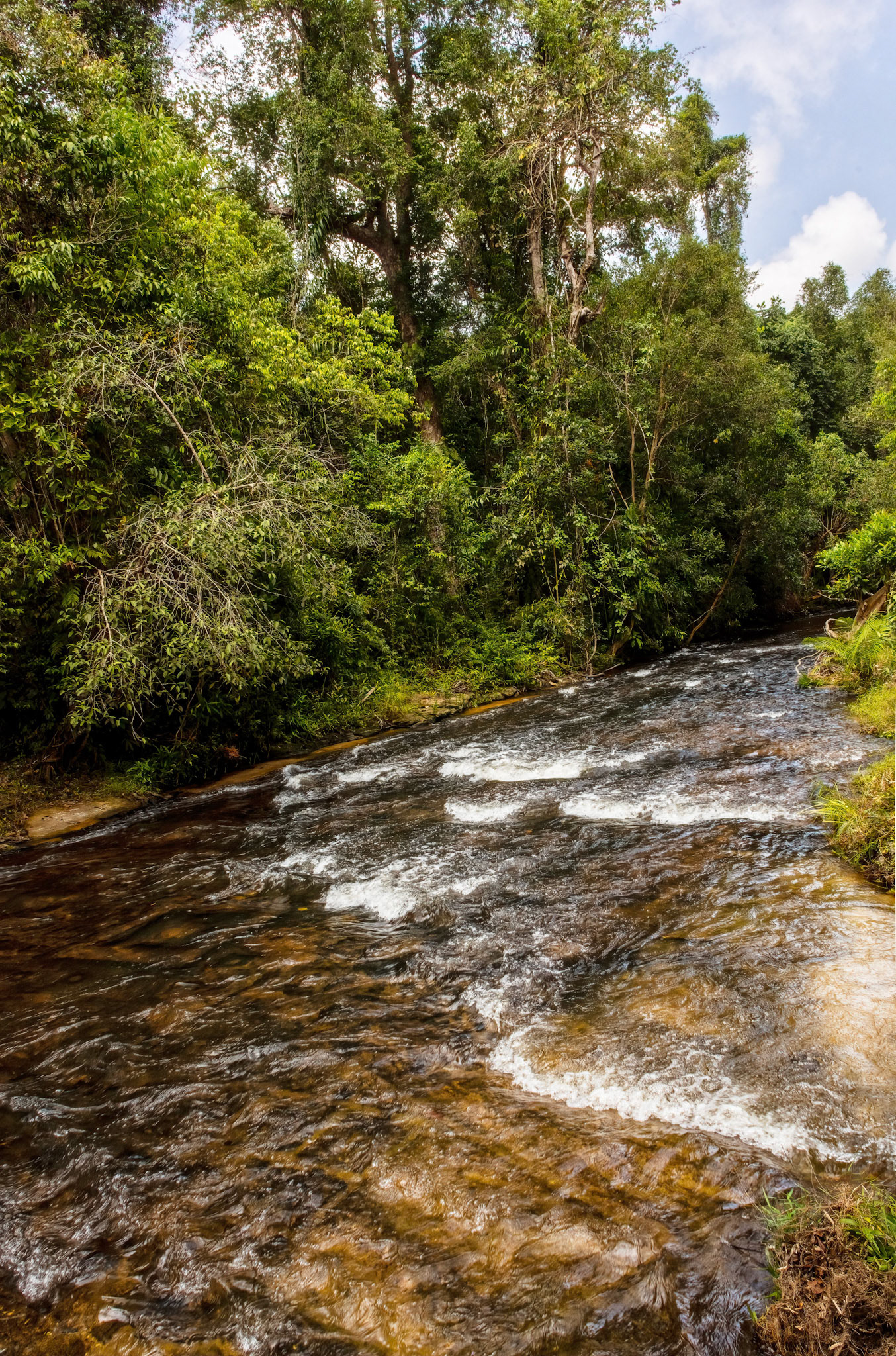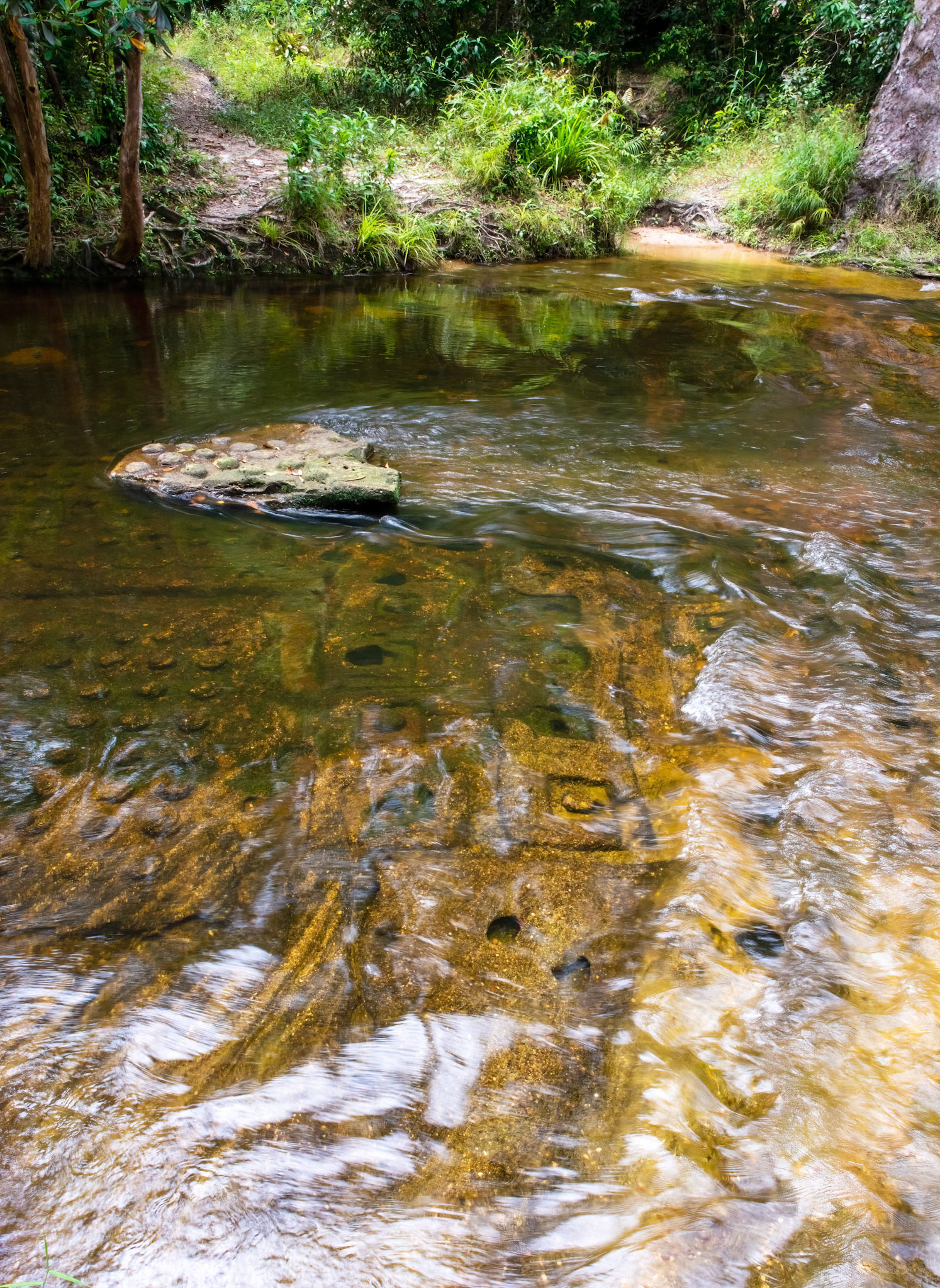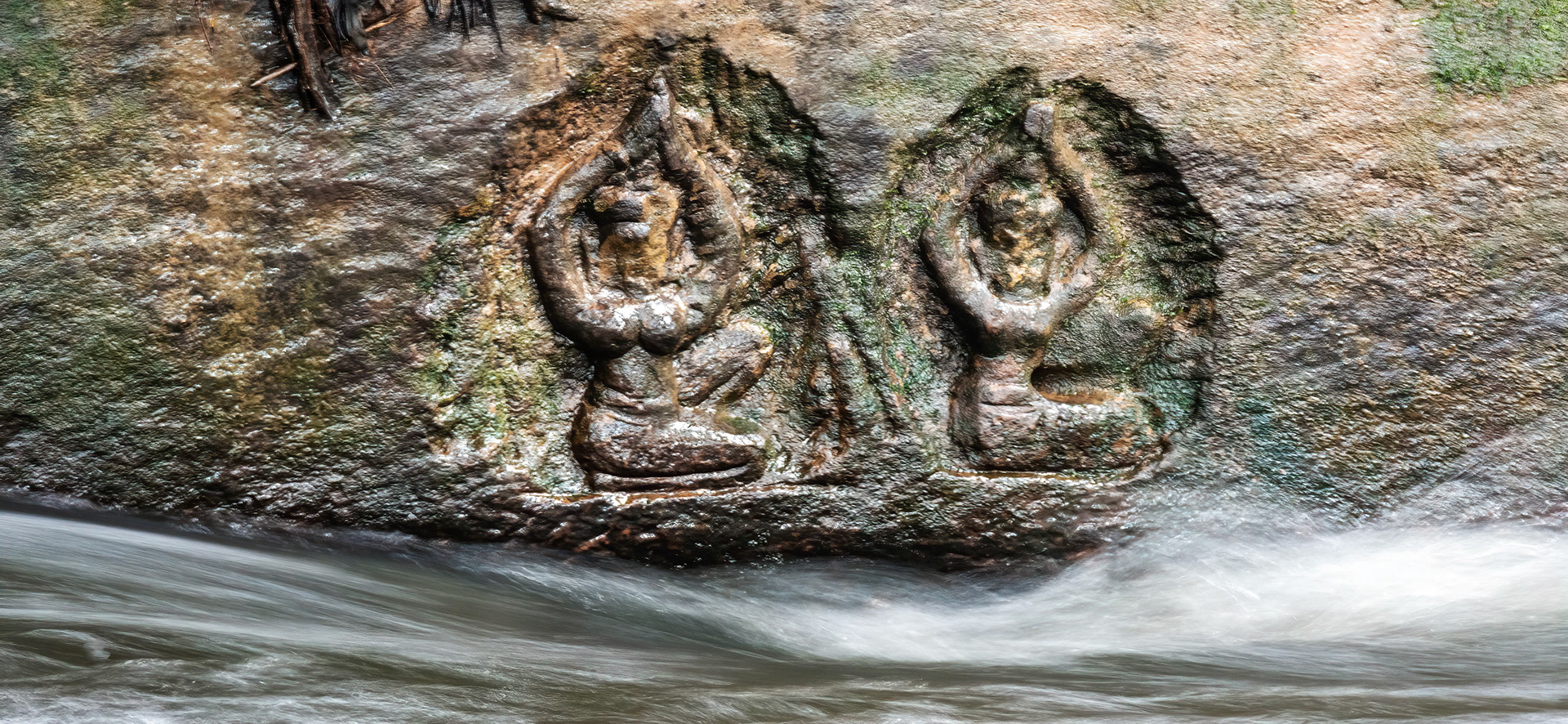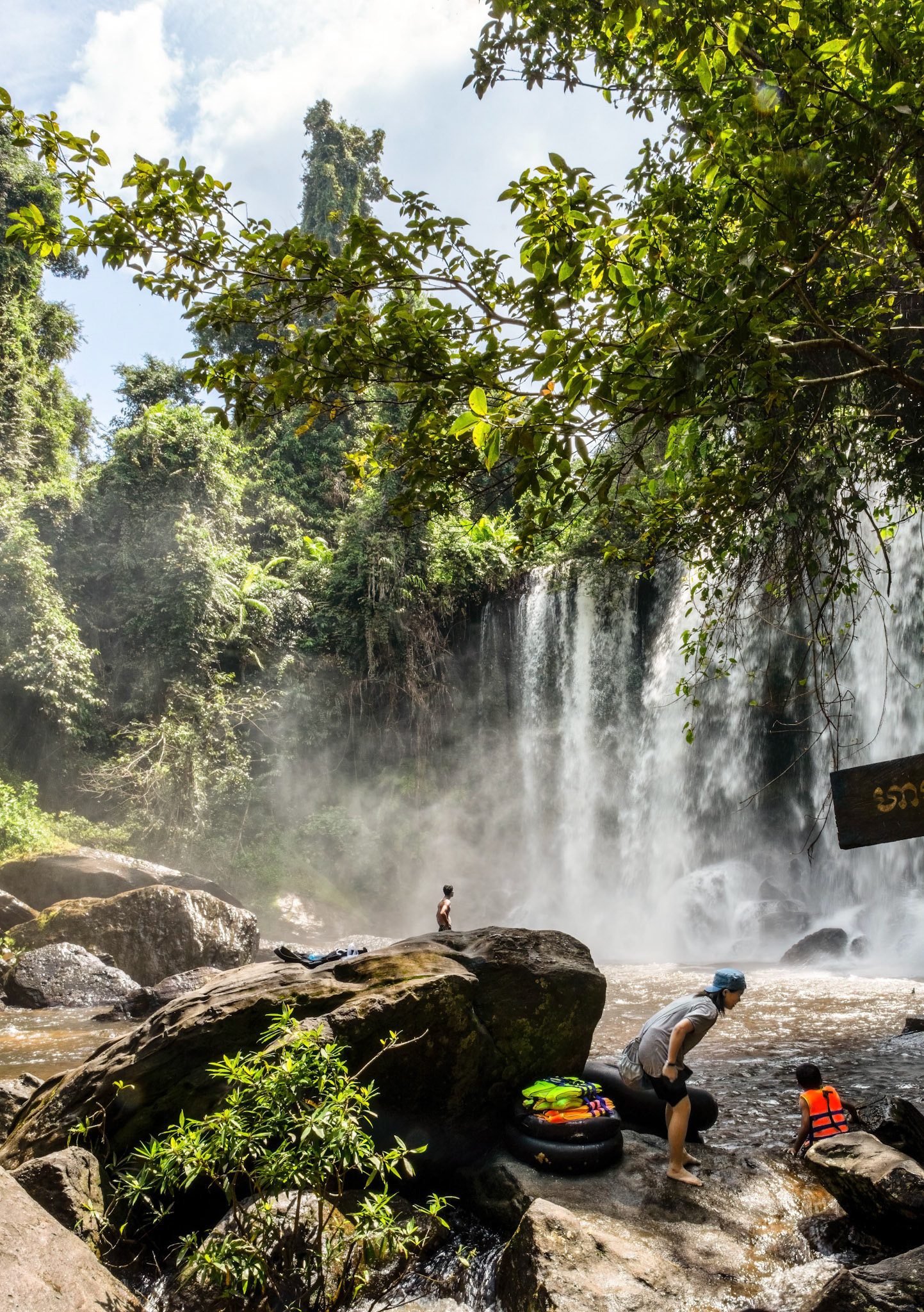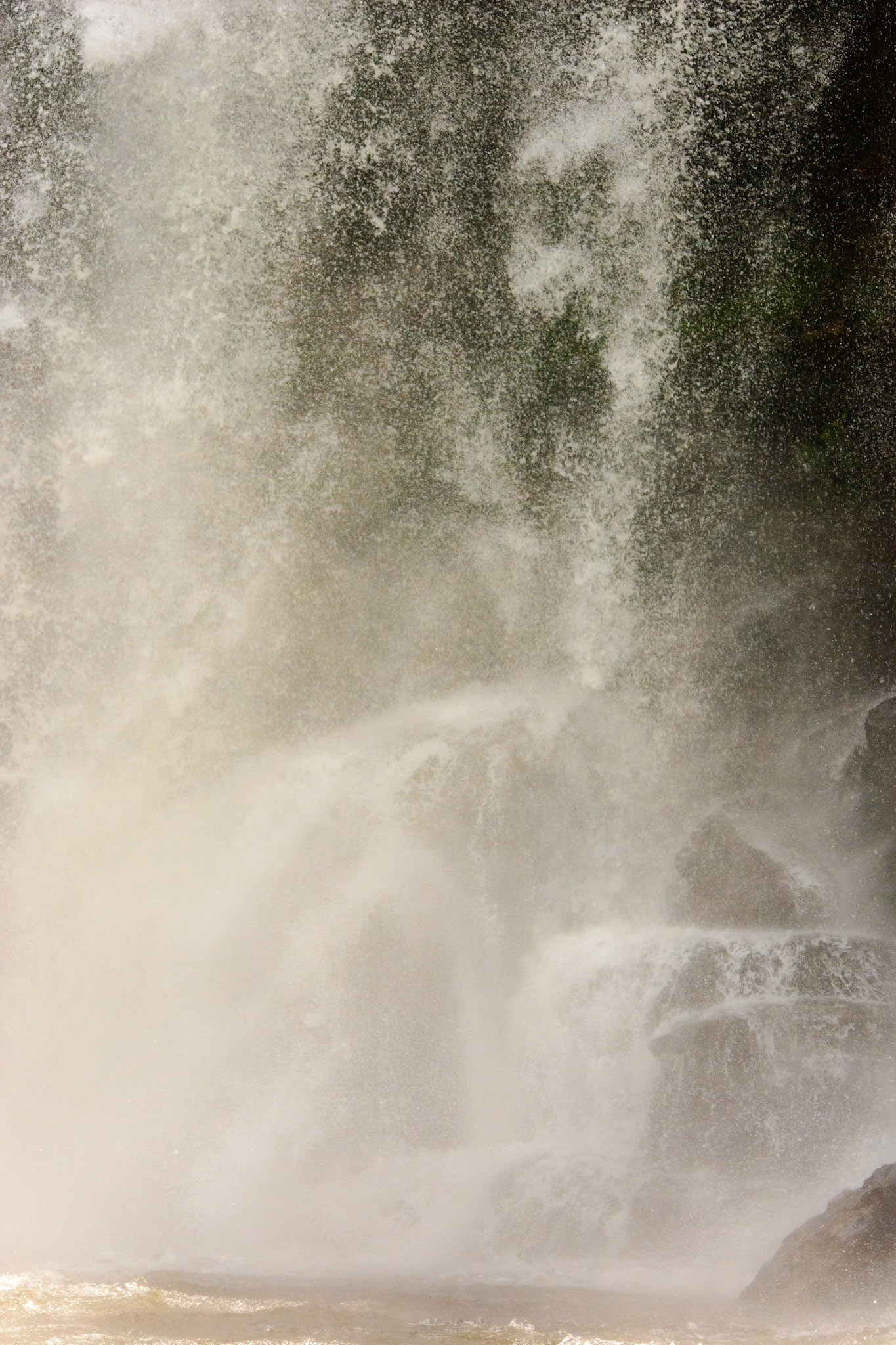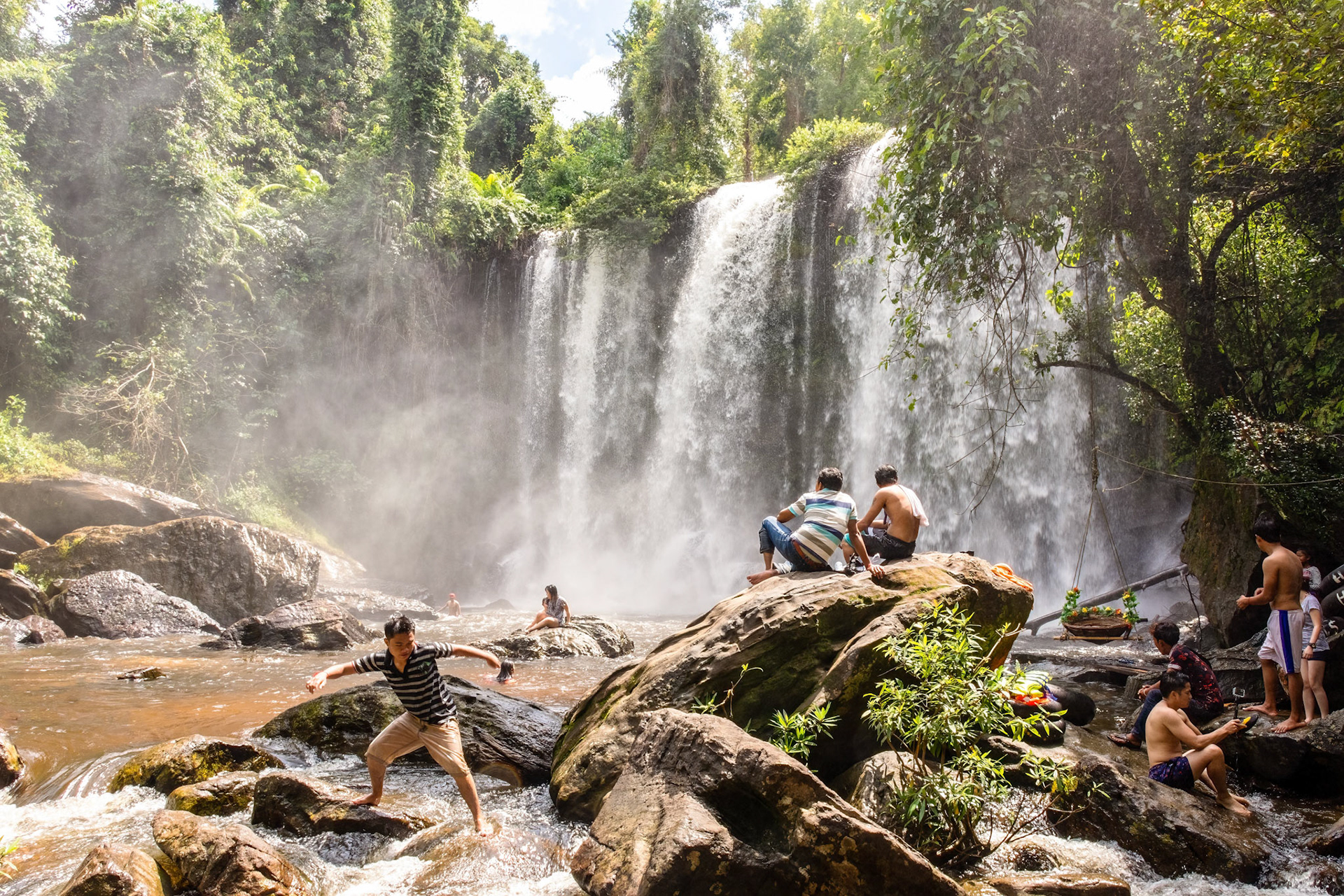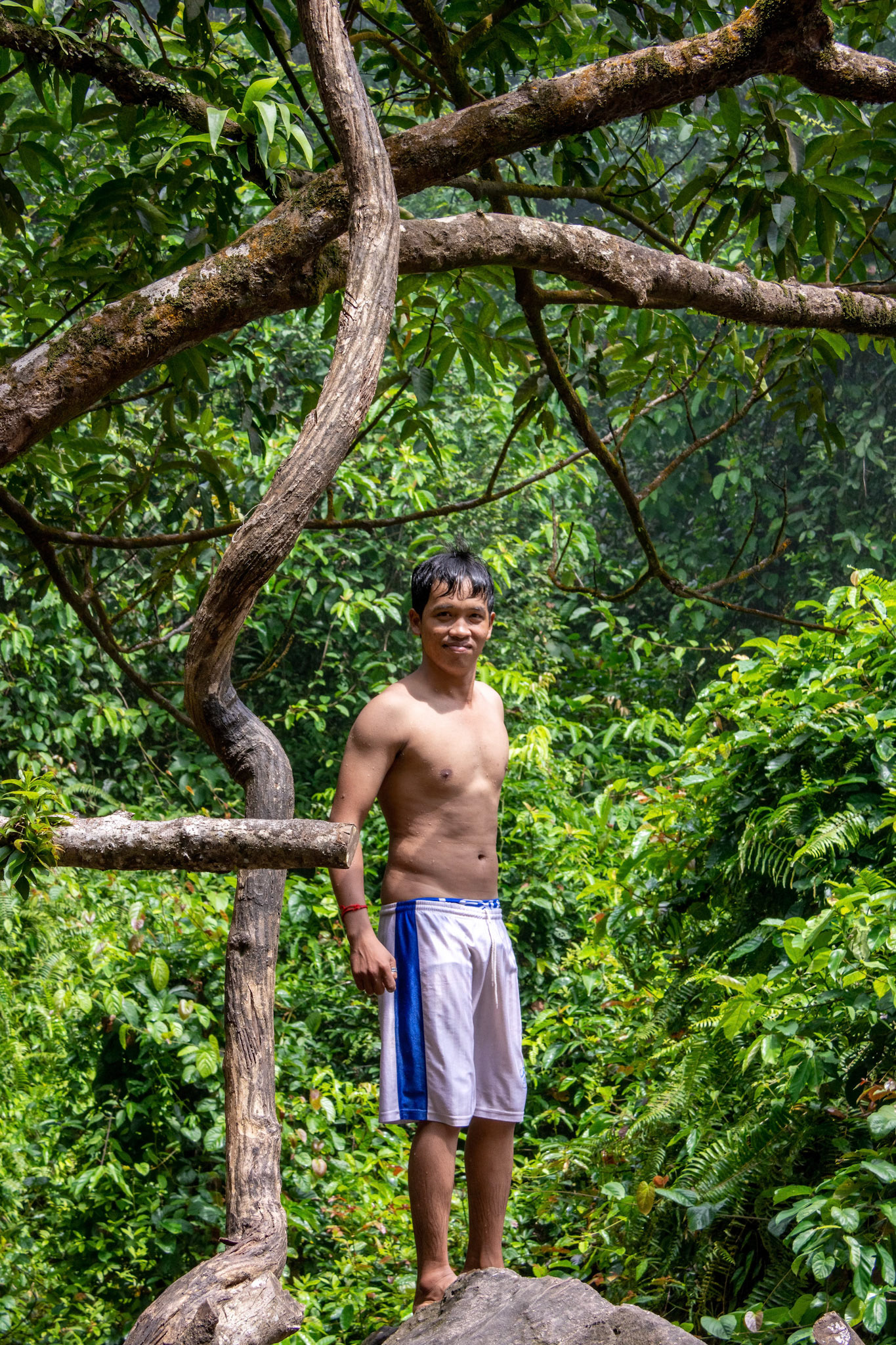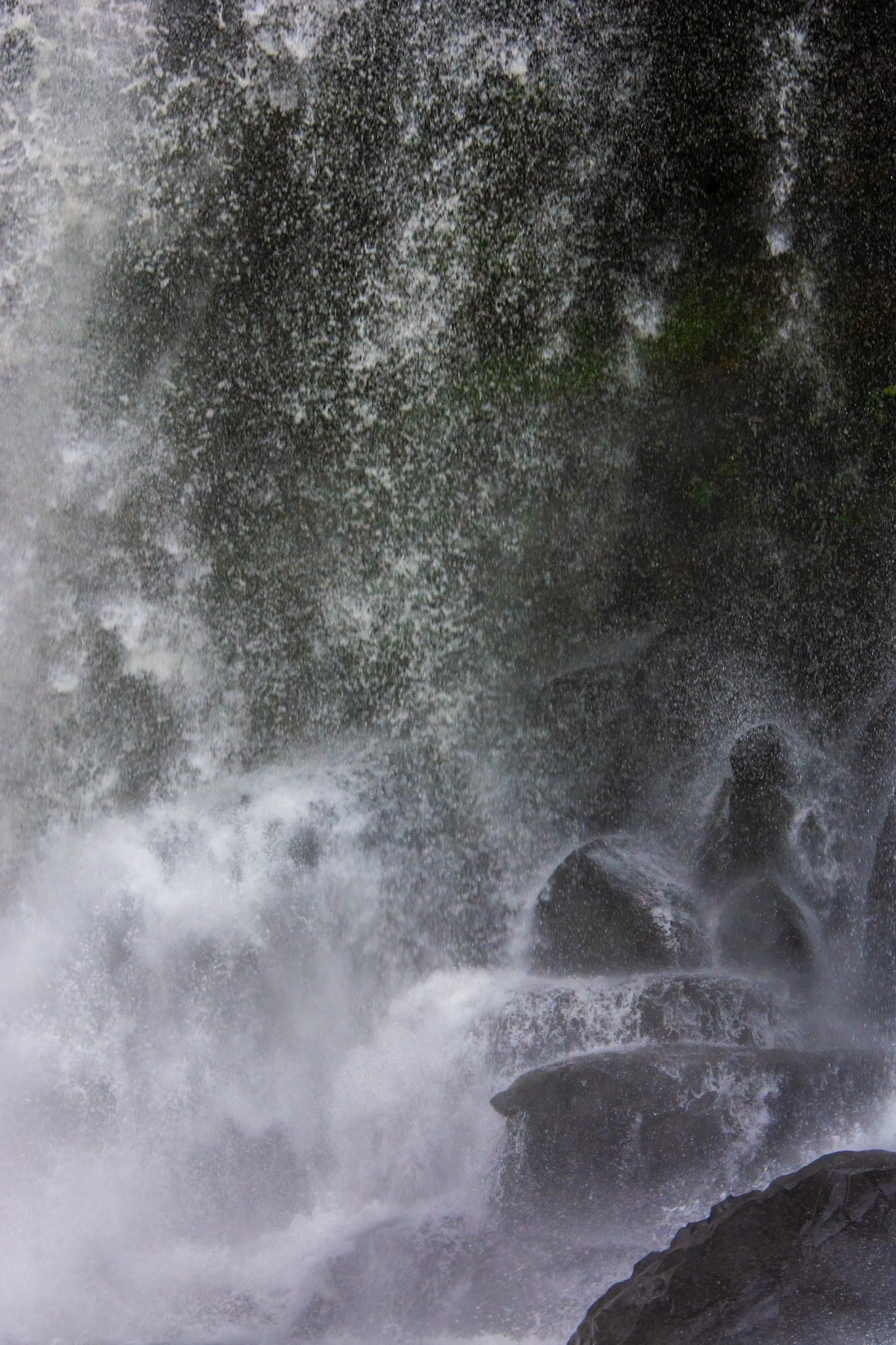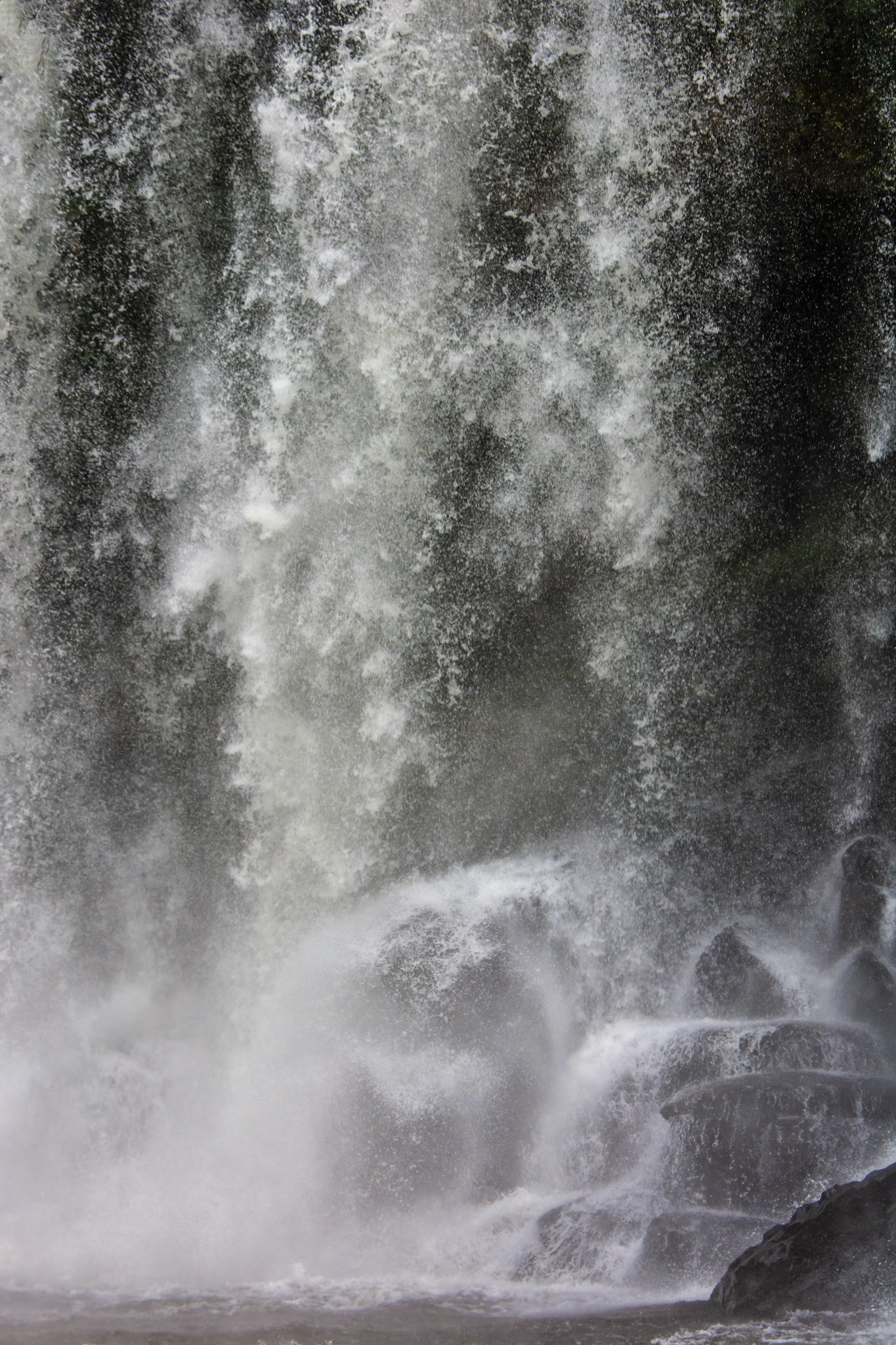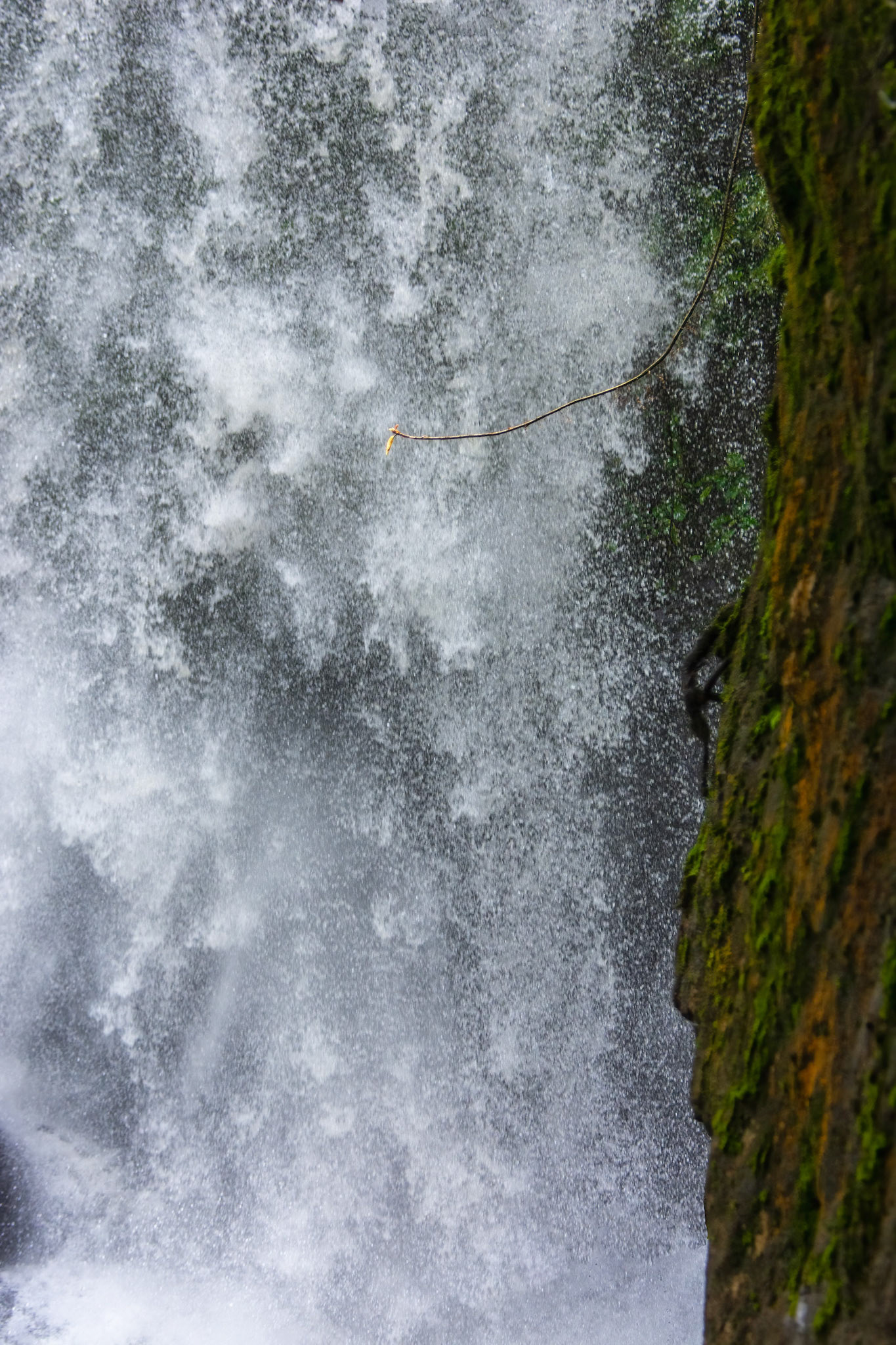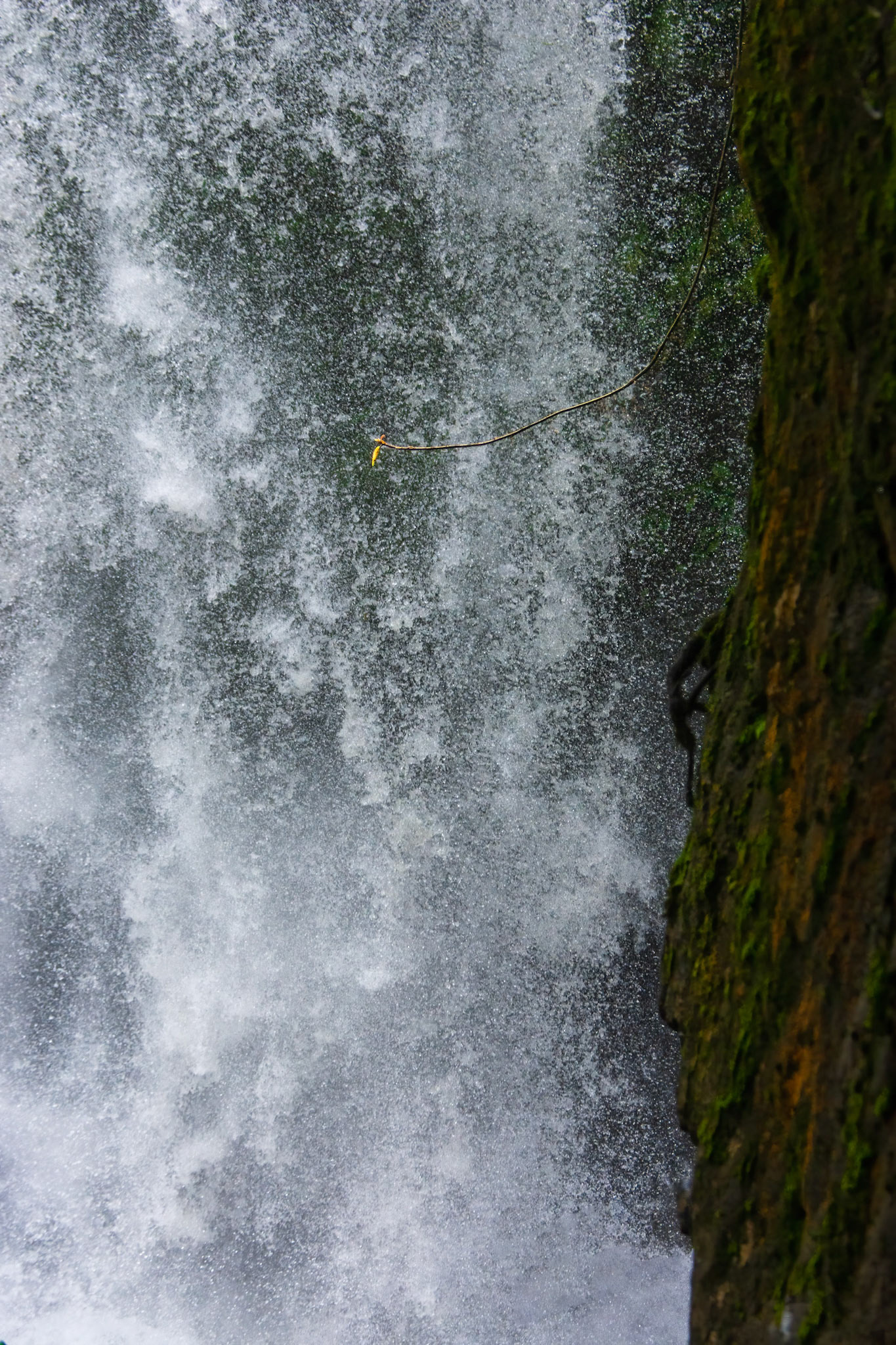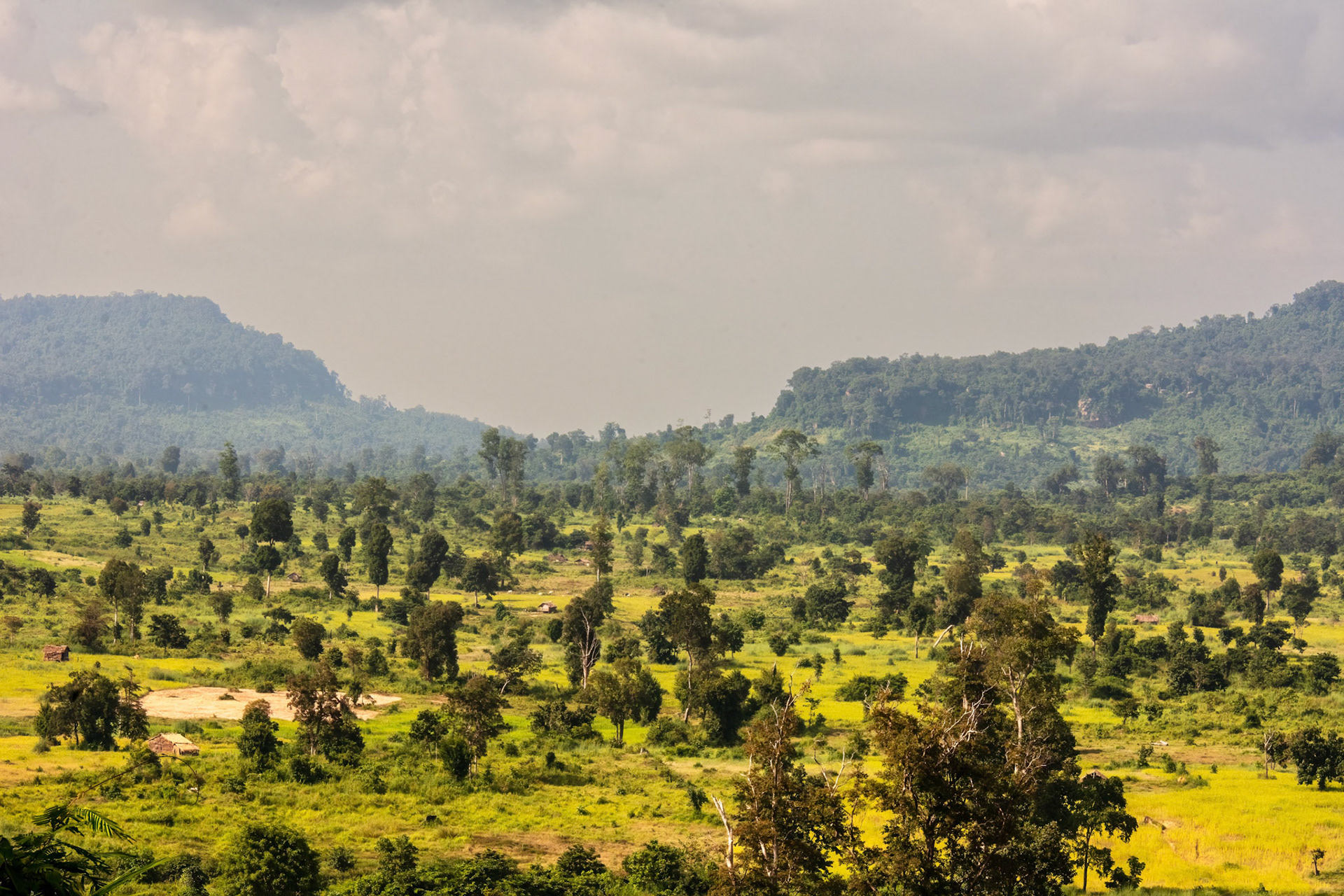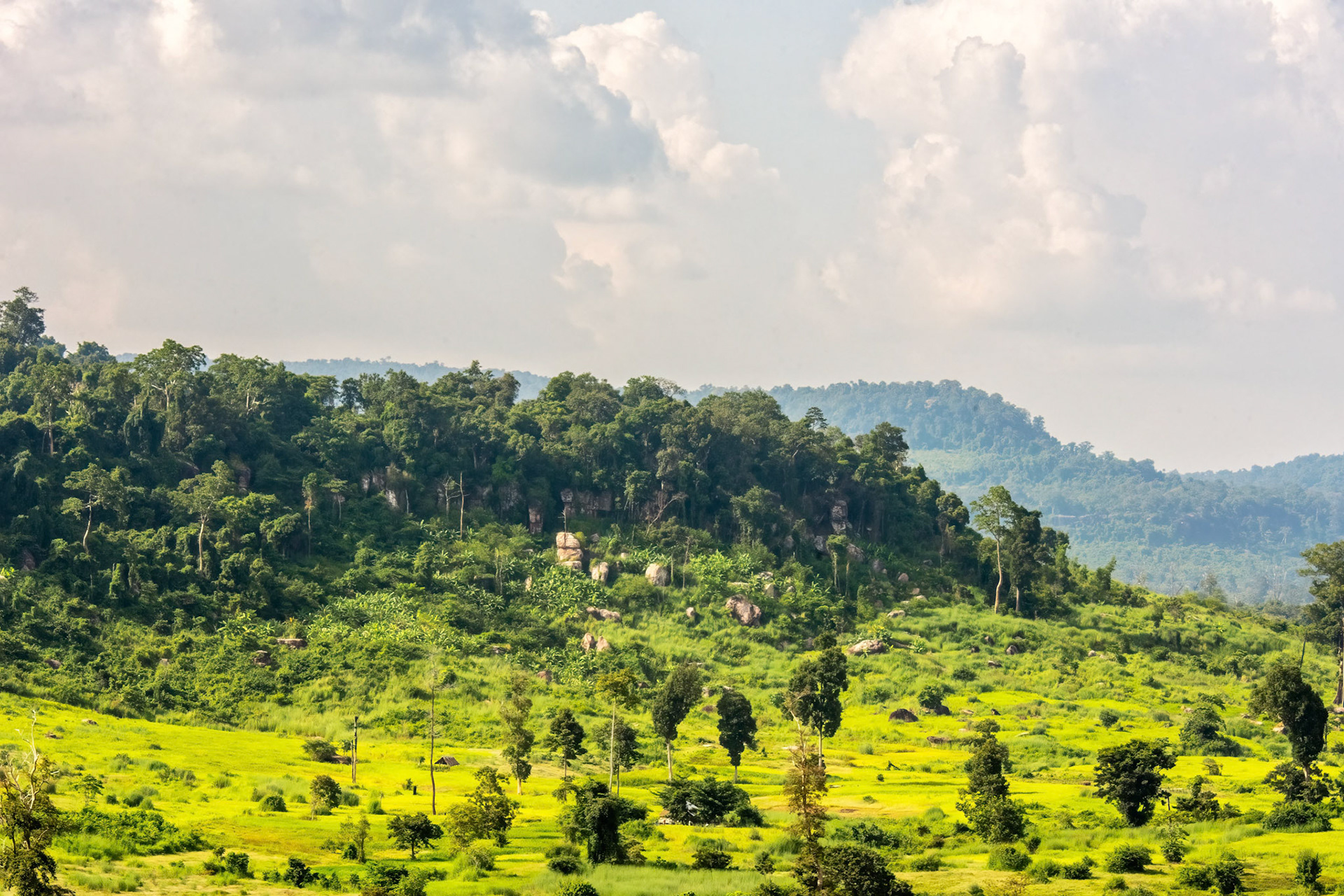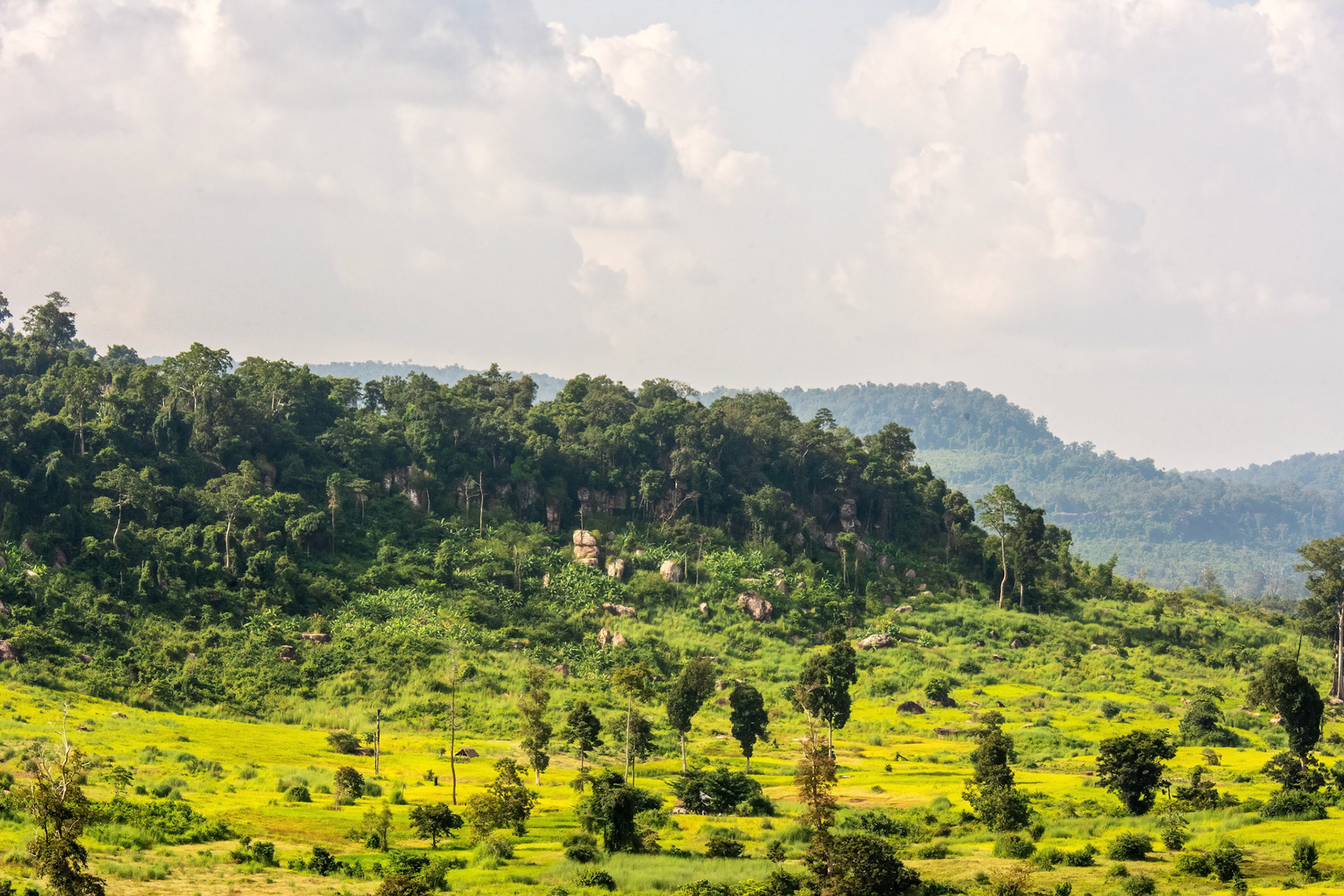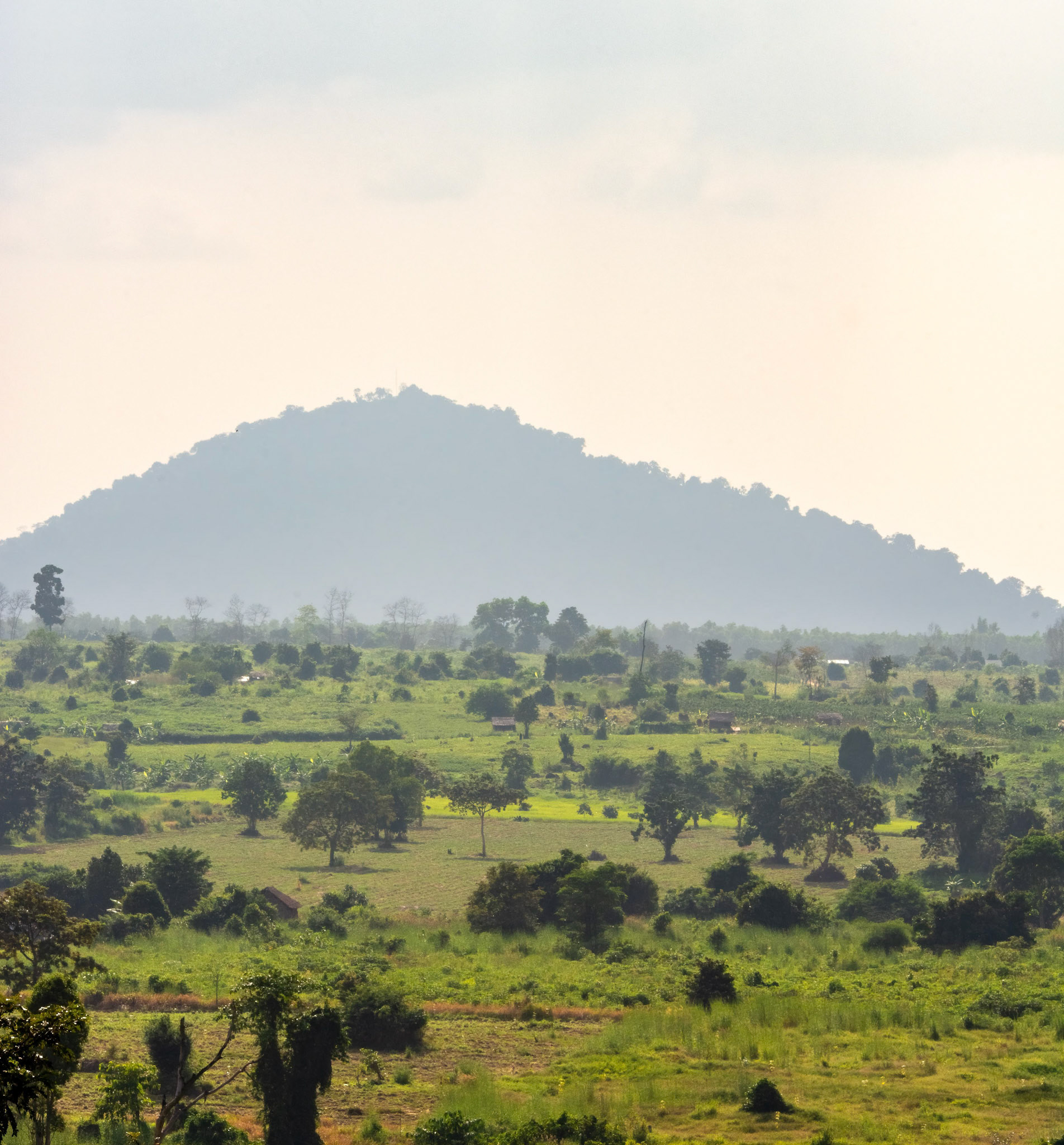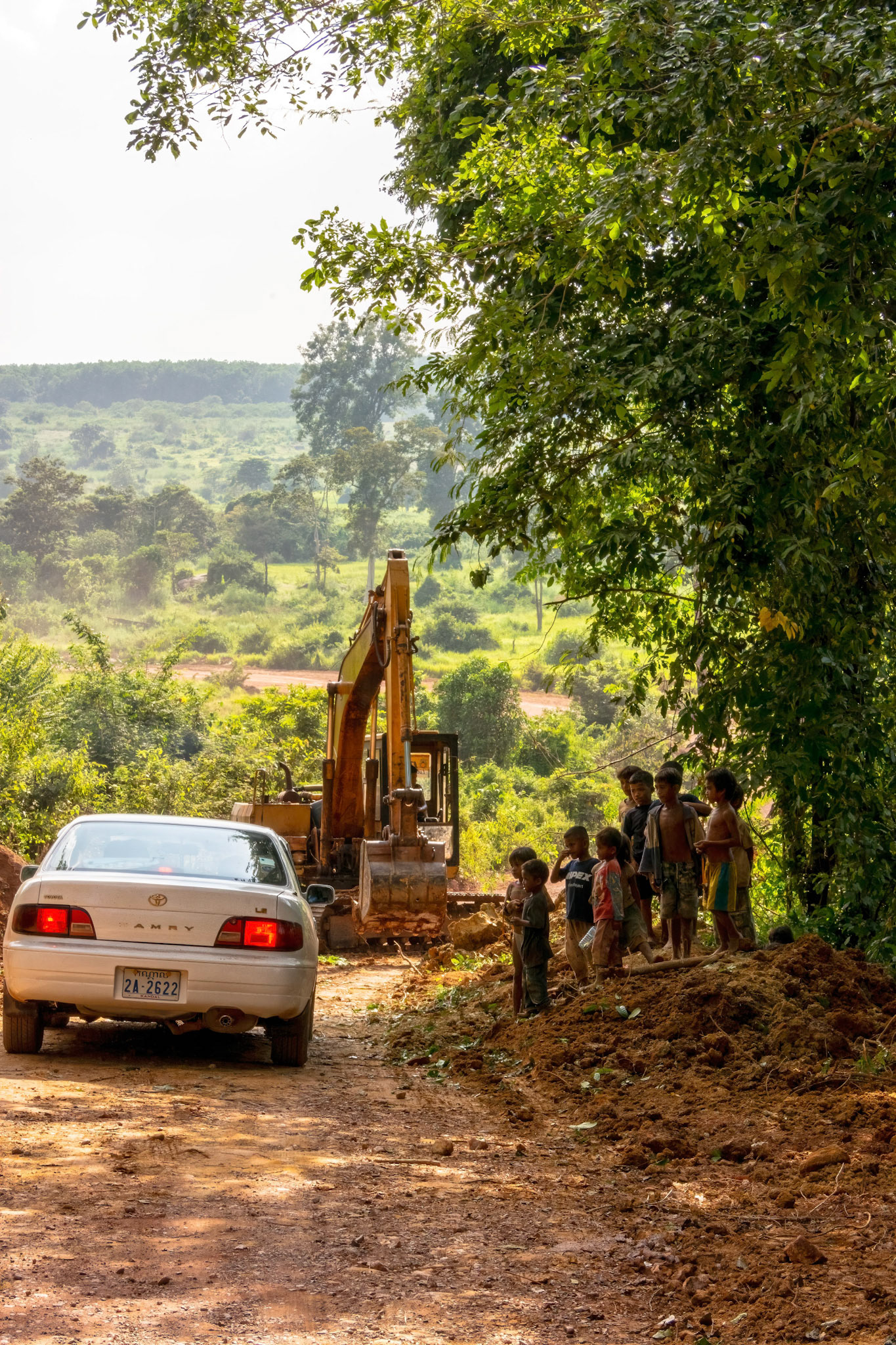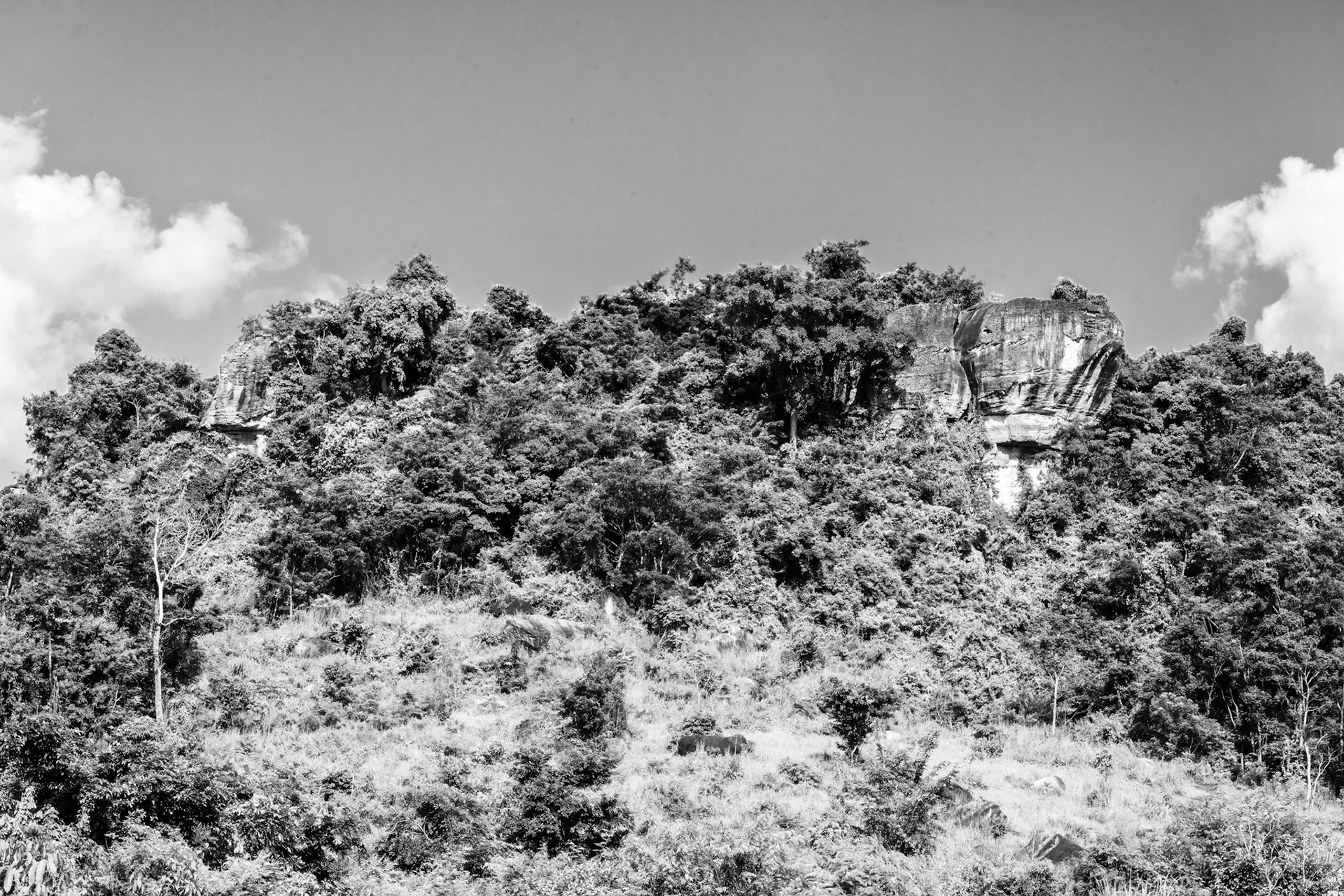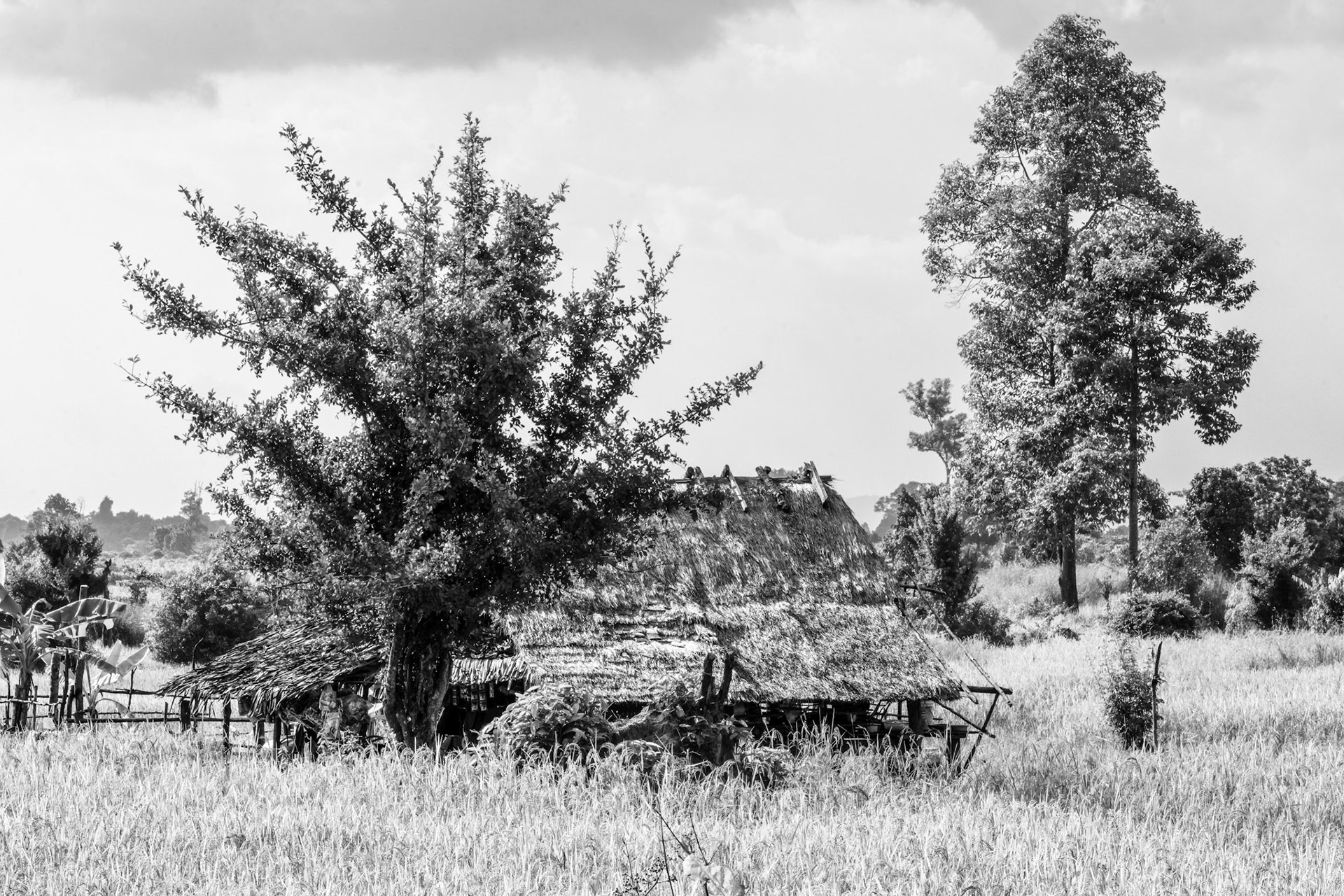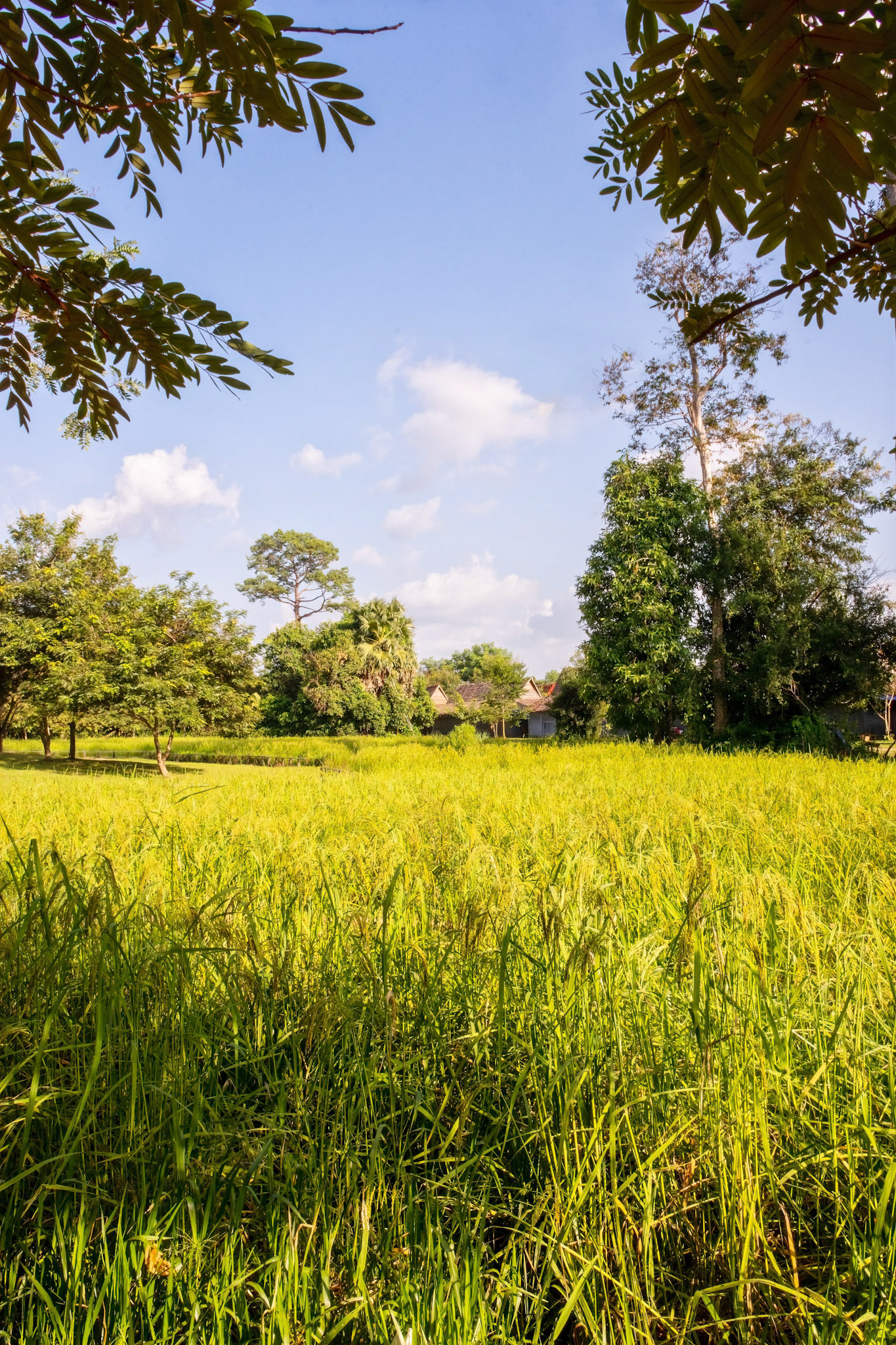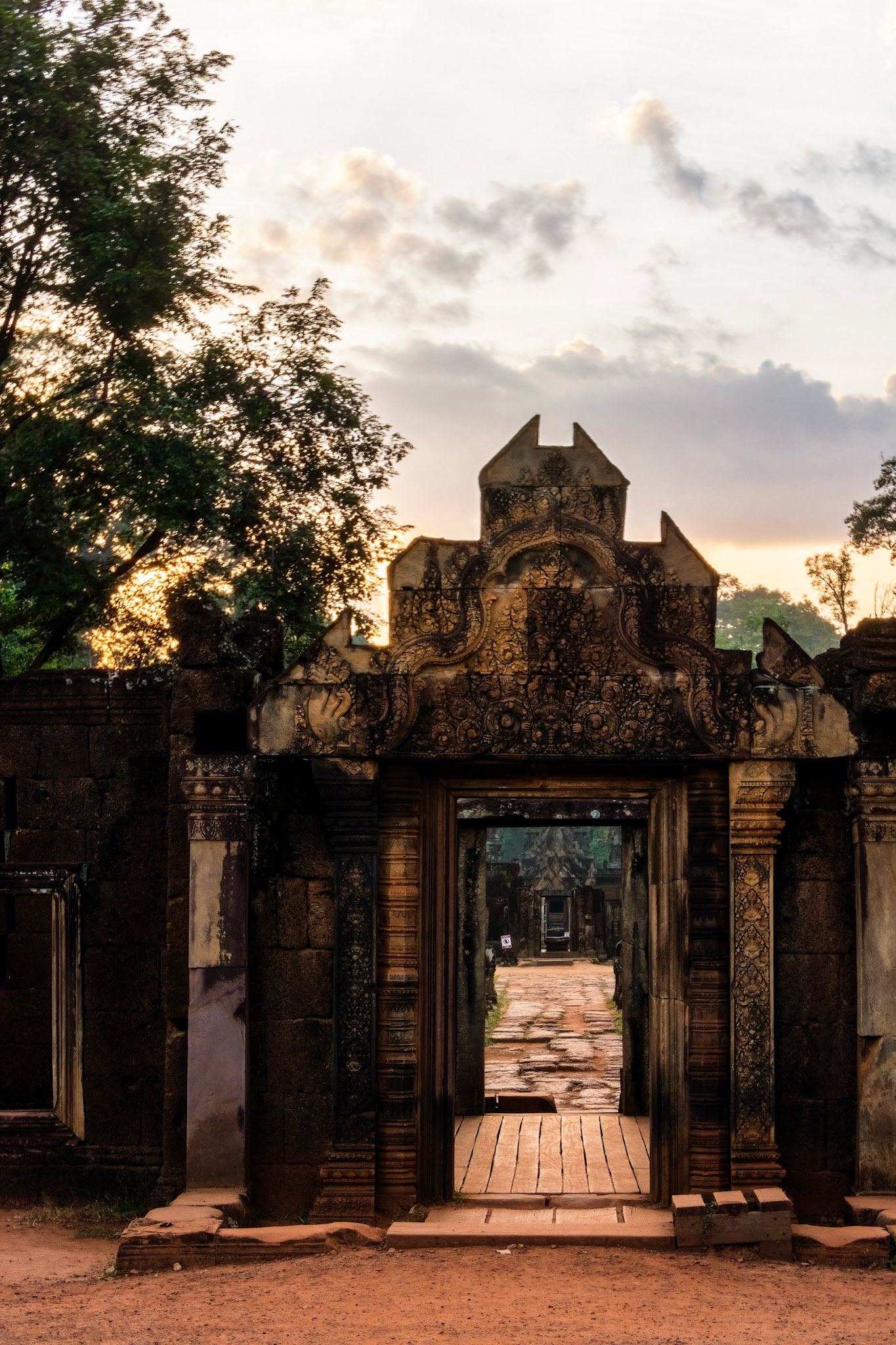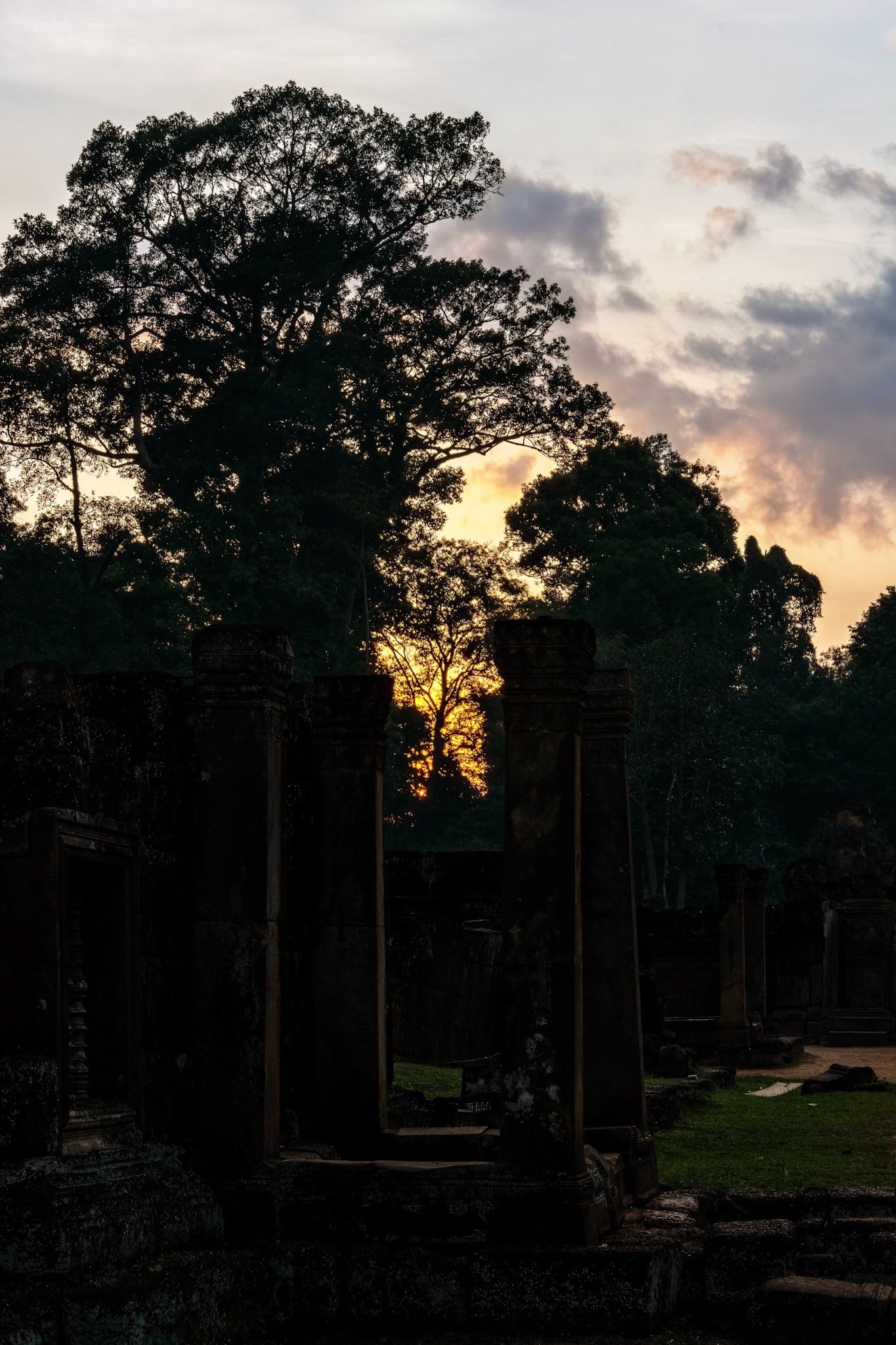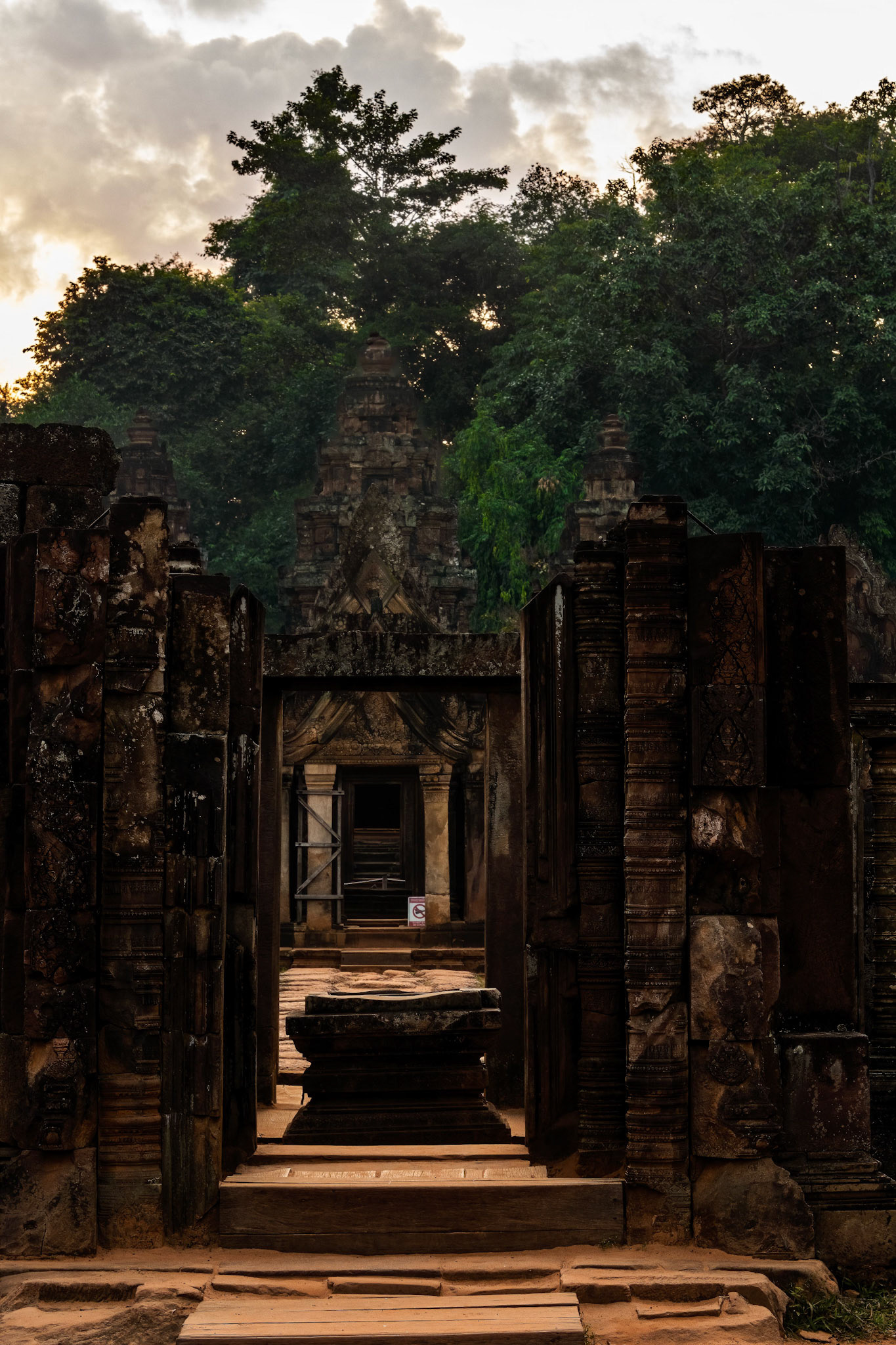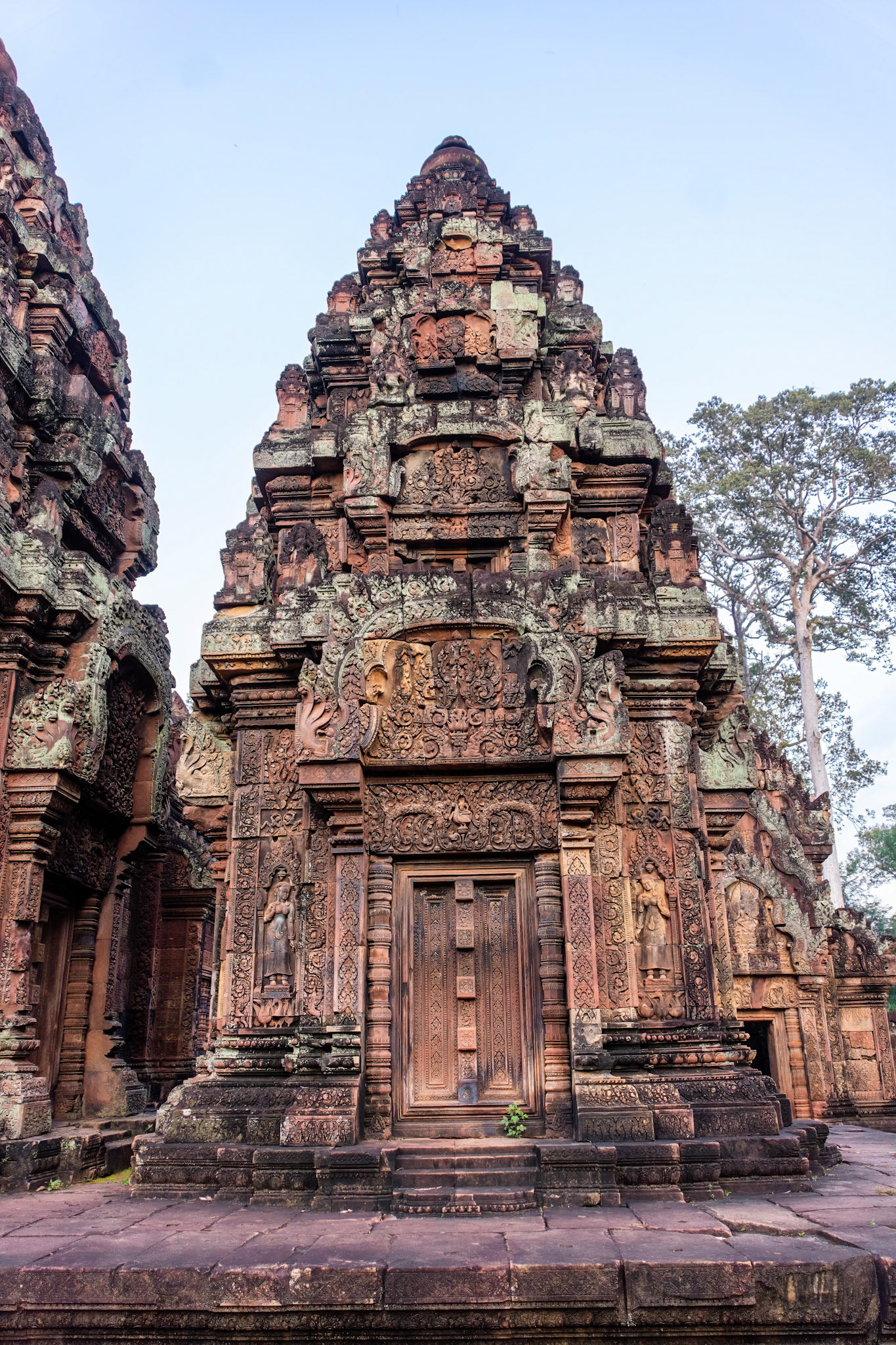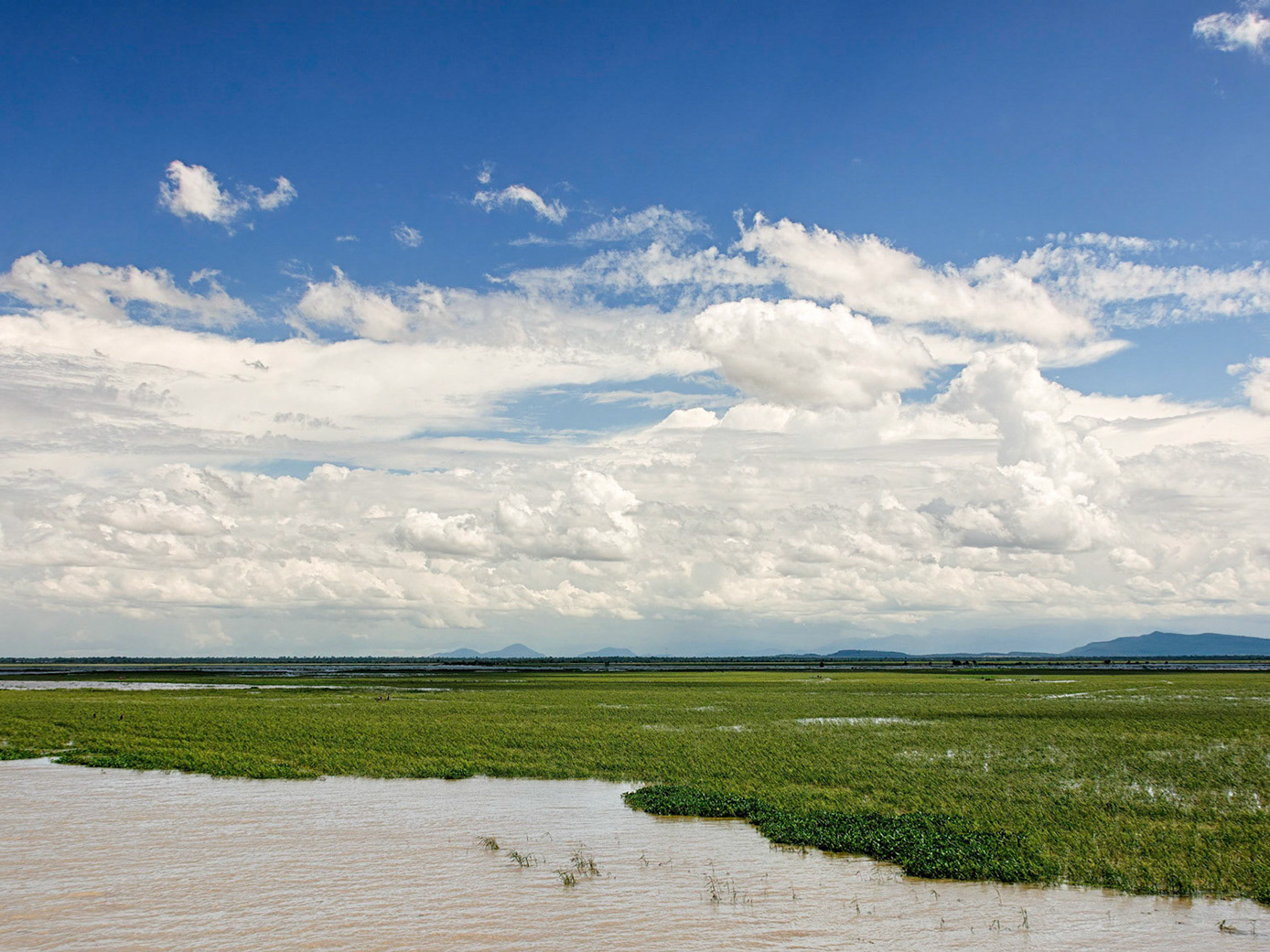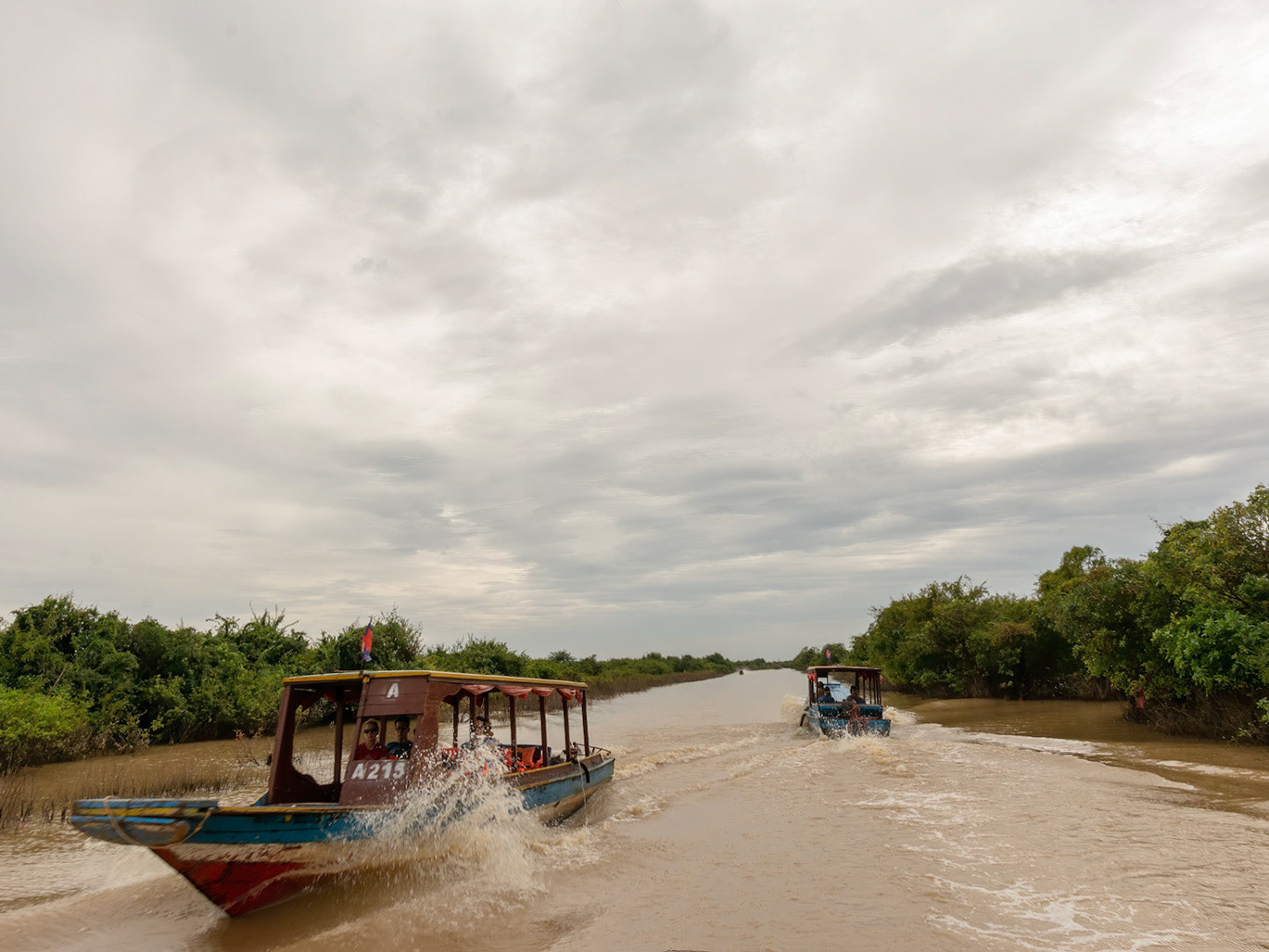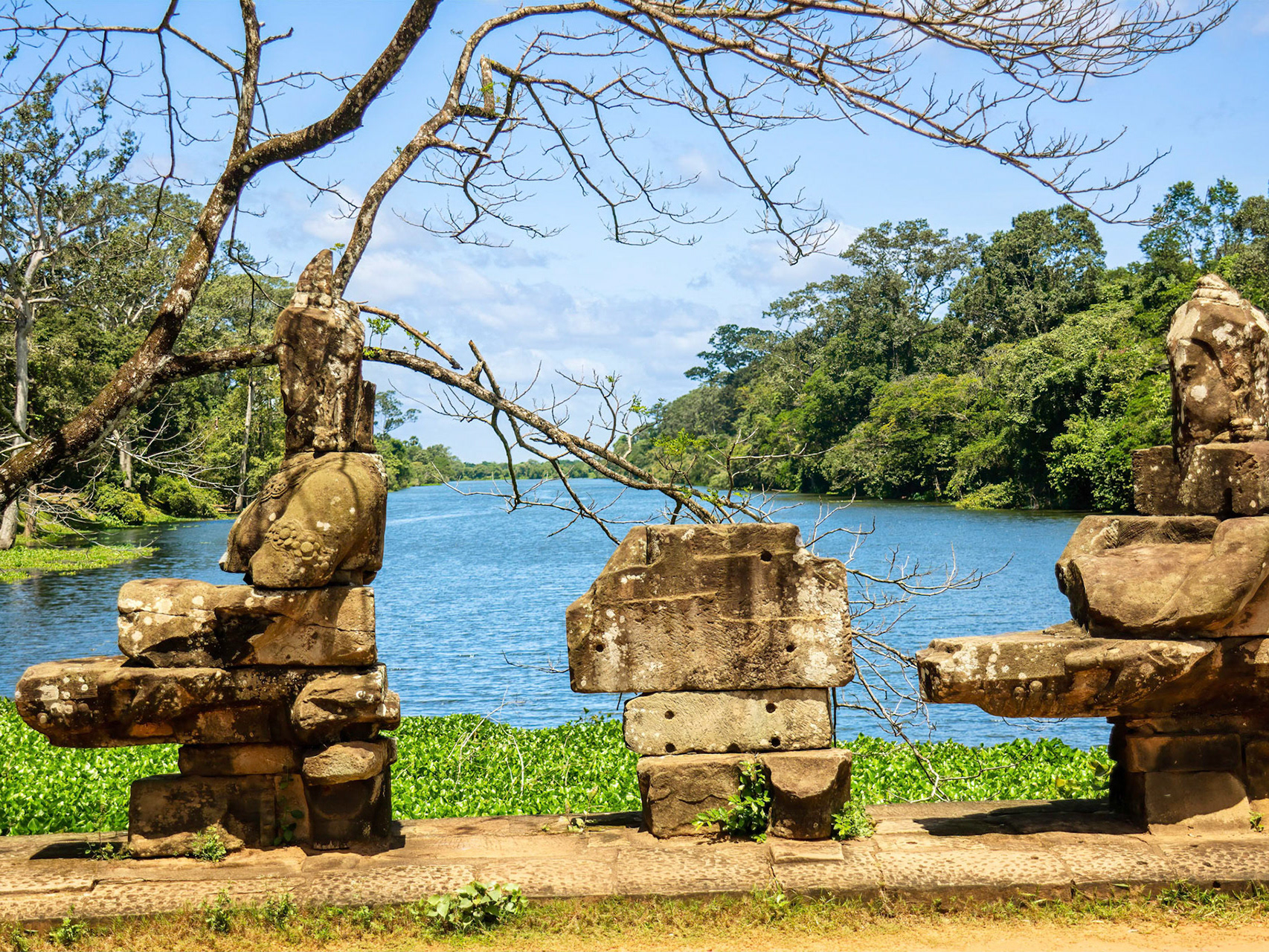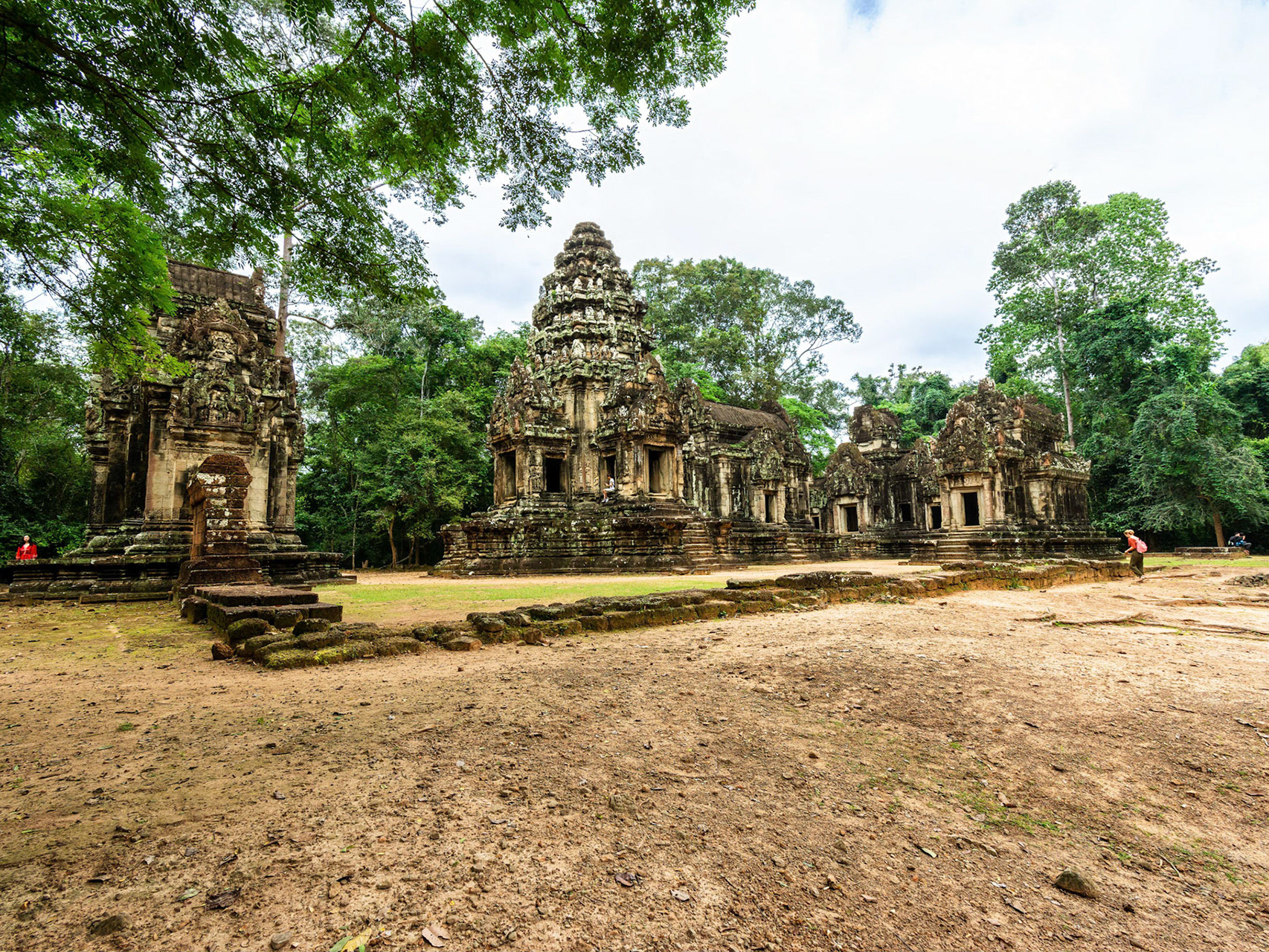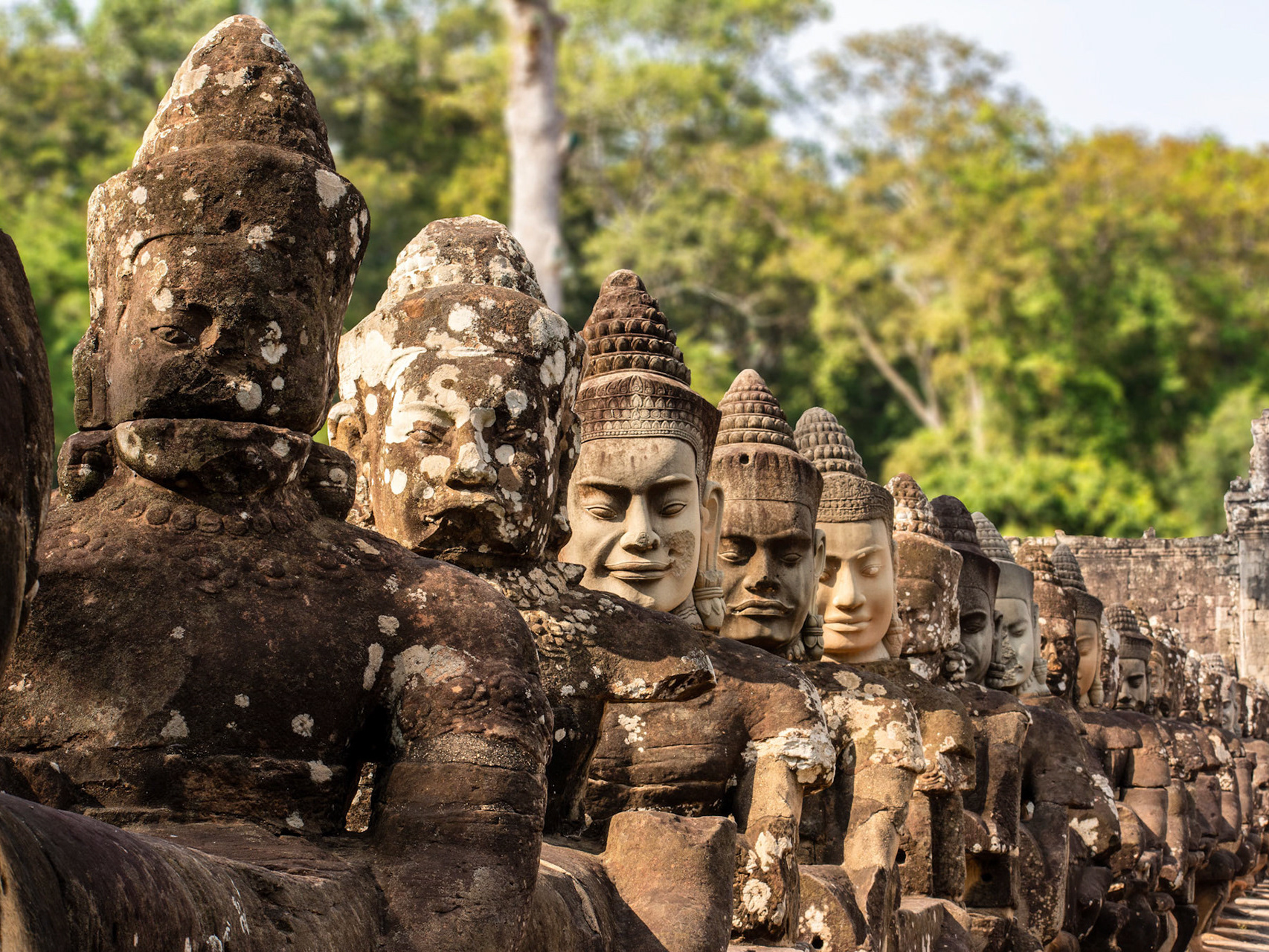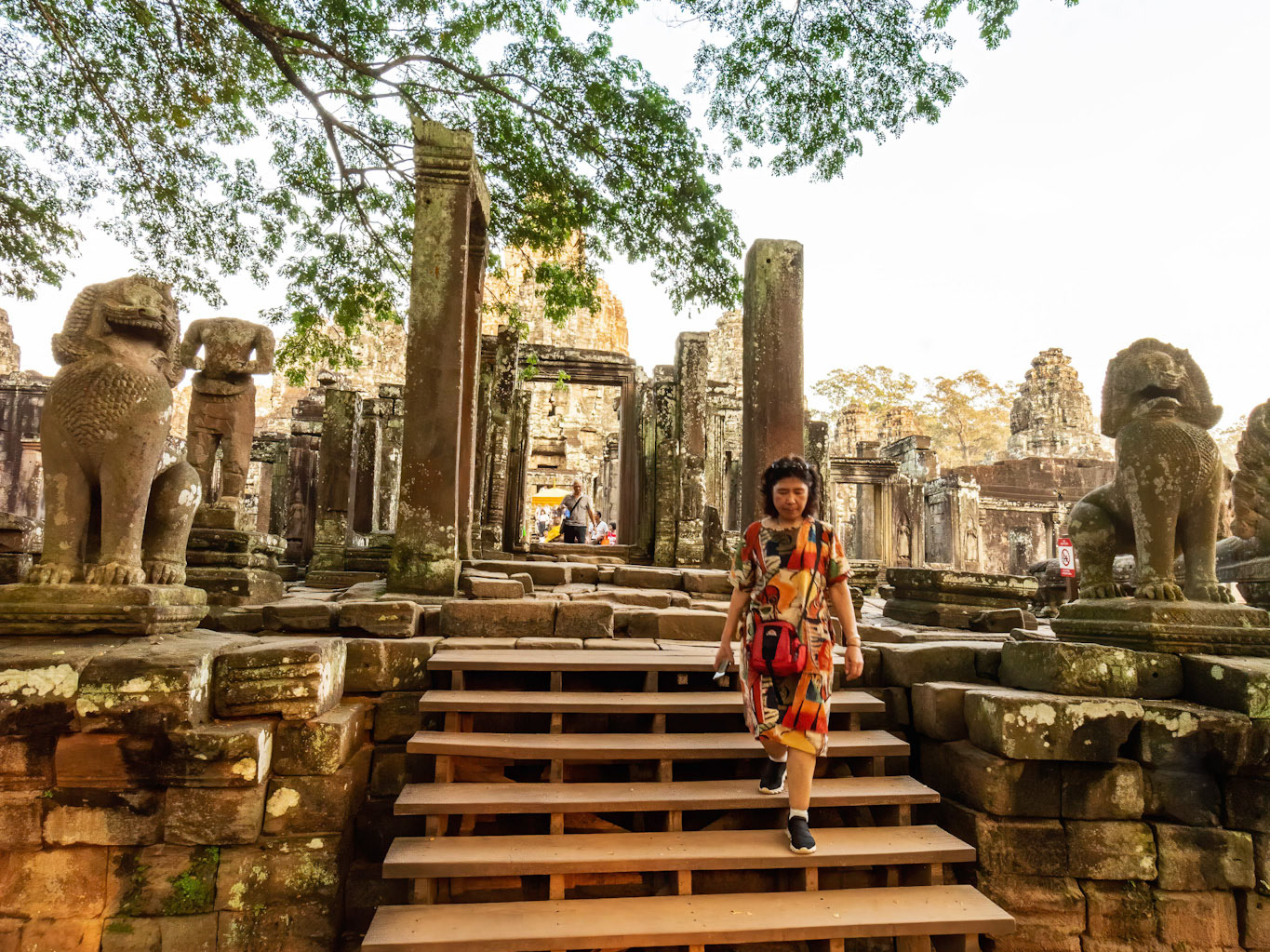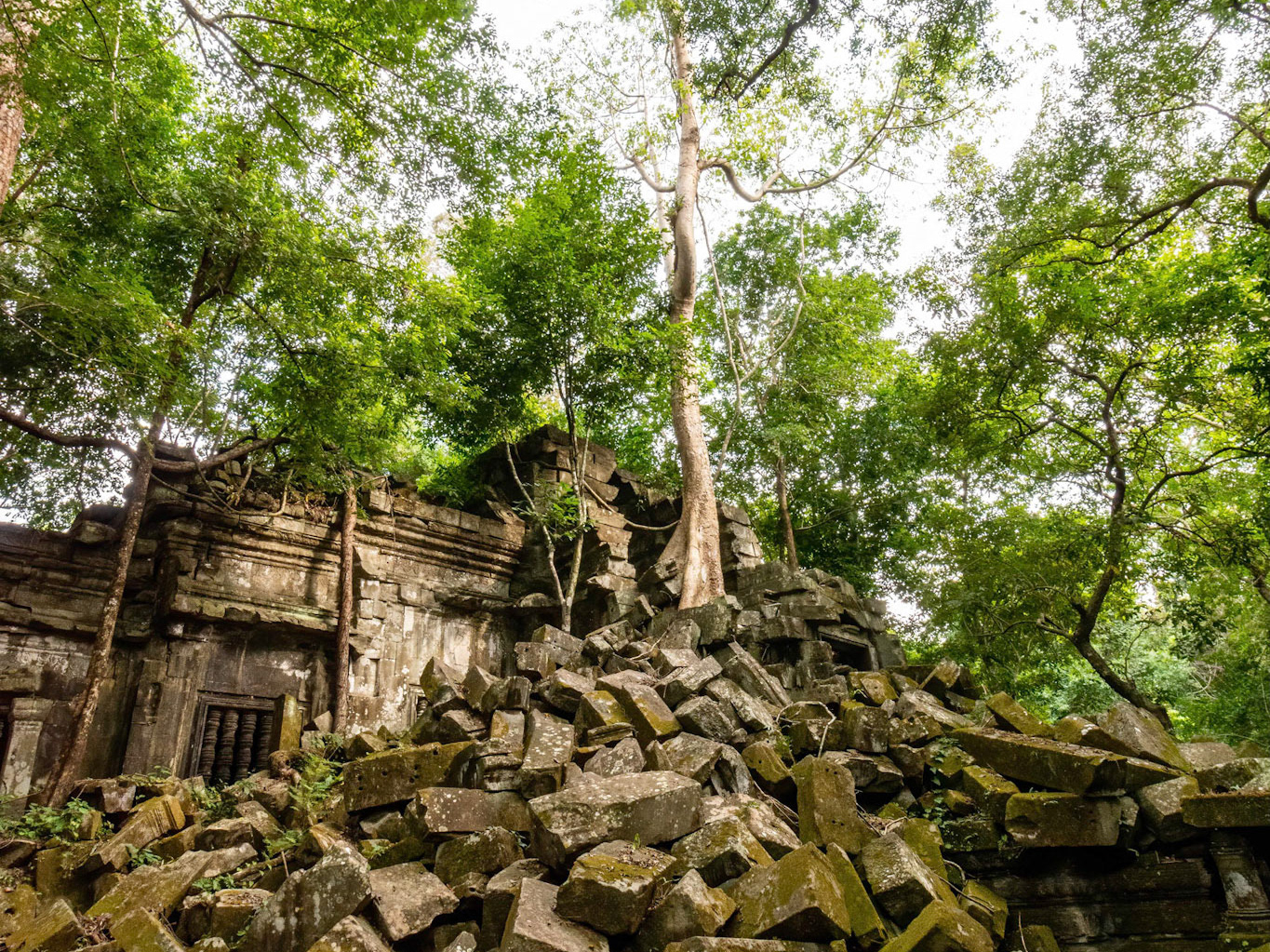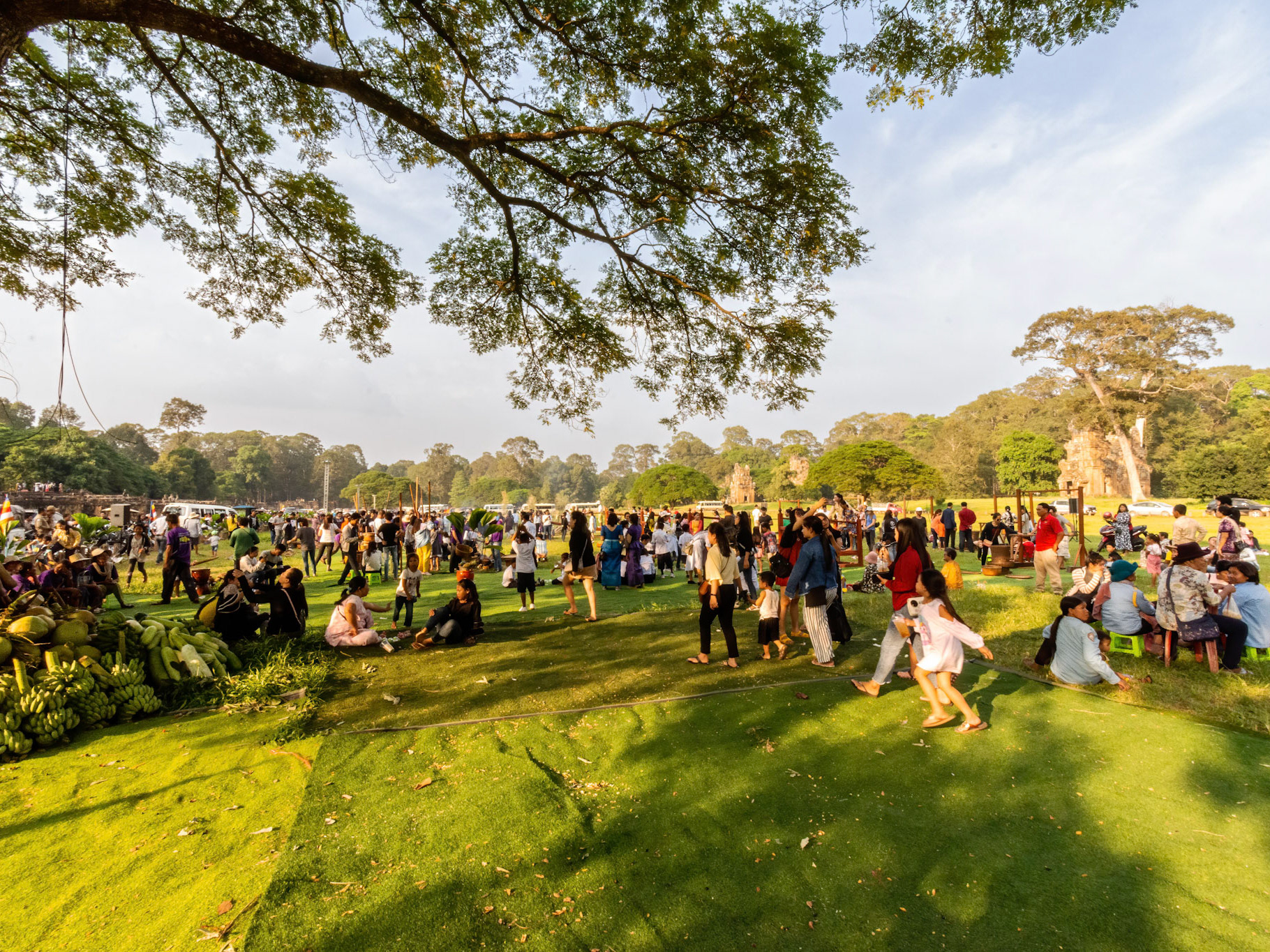On my 2014 trip I only had a short time in Siem Reap, which was really stupid- especially after I had sworn in 2013 that I would spend at least a week the next time I visited. Since I had already been to Angkors Wat and Thom and Ta Prohm, I thought it would be a good idea to venture further afield and booked two trips: one to Phnom Kulen and Banteay Srei; and the other to Preah Vihear Temple, see my Preah Vihear page.
Phnom Kulen (ភ្នំគូលេន, meaning "Mountain of Lychees")- the first stop, just over 30km from Siem Reap, has religious significance for both Hindus and Buddhists as well as symbolic historic importance to Cambodians as the place where Jayavarma II proclaimed independence from Java (not Indonesia but a Lao Kingdom) in 804CE, which also marks the commencement of the Khmer Empire. With the proclamation Jayavarma began the linga cult of the king.
As recently as 2013 the actual ancient capital of Mahendraparvata was "re-discovered" by an Australian team from the University of Sydney. In 2014 foreigners were required to purchase a special ticket, separate from the Angkor Pass, from an office in Siem Reap for about $US20 to get access to Phnom Kulen. Tickets now can be purchased at the foot of the mountain or booked online, see SiemReap.net.
Once on our way Davit, my driver, went on an almost deserted, but really well built, road through the modern, desolate and sterile Siem Reap administrative centre; bereft of all but a few groundkeepers. Once through the administrative centre the road degenerated to a muddy pot-holed dirt track for about 10km, I should have asked Davit to stop so I could take some photos- but then we would have been constantly stopping. About 20km further on we passed through a check-point, and after my ticket was verified, we did a rapid hairpin climb up about 150 metres to the beginning of the plateau and then continued on for about another 10km, on a mostly good jungle lined dirt road with the occasional massage stretches.
As we travelled we could see walking tracks here and there leading to villages hidden behind the thick growth. This part of Cambodia was one of the Khmer Rouge's last strongholds, meaning it is not advisable to step out to do a bit of exploring because the area was heavily land-mined, and unexploded ordinance continues to come to light, making it dangerous even for the 4,000 or so locals. Passing over the Stung Kbal Spean we headed up to Wat Preah Ang Thom, which houses a collection of temples some in rock overhangs and others in modern kitschy traditional style buildings. After looking around for a bit we went to the uppermost temple to see the Reclining Buddha, the largest in Cambodia.
Carved into the riverbed stone of the Stung Kbal Spean River are the 1,000 lingams (symbol of the Hindu god Vishnu), most of which are laid out in a grid pattern. There are also lingam-yoni designs, as well as various other carvings. Further up the river is the clear water Seven Lucky Well Spring, also known as Buddha's Footprint. I have never seen water as clear as this was; the water bubbles up through very fine sediment at the bottom of the pool, that churns over like rapidly moving clouds at each belch, that never seems to rise above its layer, about 1.5 to 2 metres below the surface.
Down river are two waterfalls, I visited the lower and more spectacular one, which is about 20 metres high and the same wide (varies according to wet or dry season). Fortunately the old rickety wooden stairs- referred to on a number of websites- have been replaced by a steel stairway; not so bad on the way down but you get a bit puffed on the way back up. You hear the roar before you see the spectacle of the huge volume of water dropping down to the pool underneath. Luckily the river doesn't race away which means you are able to swim in the large rock pool below the falls. There are a number of huts, well shacks really, which you can pay about a $1 to get changed in and have your possessions looked after while you swim. While we were there, there was a group of young boys- who I thought were locals; they were enjoying themselves skinny dipping until someone came and said something to them, quickly they dashed behind some rocks and emerged a few moments later clad in monks robes. Just as well for them, because shortly after some senior monks came into view.
After a bit of lunch it was time to head back towards Siem Reap to go to Banteay Srei, we arrived just after 15:30 but were turned back at the gate because I didn't have the correct ticket. Davit, who knew that one of the main reasons I did the tour was to visit this temple, did a mad dash with me to the pass control point and equally mad dash back to the temple (20km each way), hoping to return before the temple closed. By the time we returned the temple had actually closed but I wanted to get as close to it as I could; just as well because a guard came out, Davit explained the problem and after a quick bit of negotiation he allowed us to go in. Not only that he gave me a guided tour and allowed me access to parts of the temple normally roped off from visitors, we stayed until the light had completely gone- shall I say I now have a Cambodian Police badge and patch and leave it at that... Since that trip I have returned to the temple several times because the colouring and stonework carvings are exquisite and amongst the finest you are likely to see in the whole of the Angkor complex.
Sources Archaeology and Development Foundation, Wikipedia, Grantourismo, Sydney Morning Herald, The Diplomat - article by Damian Evans who lead the team which "re-discovered" Mahendraparvata.
